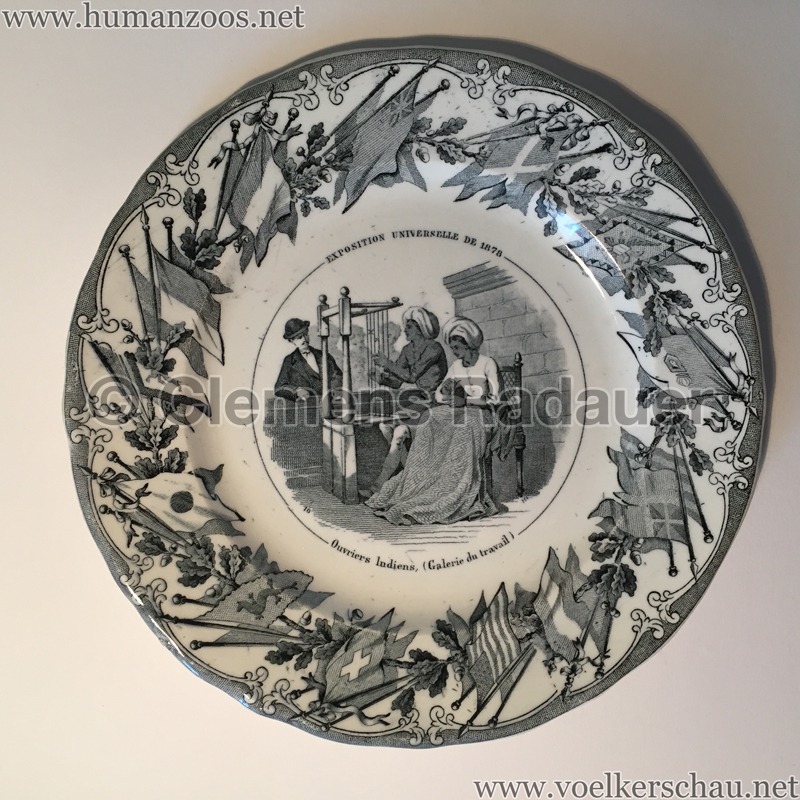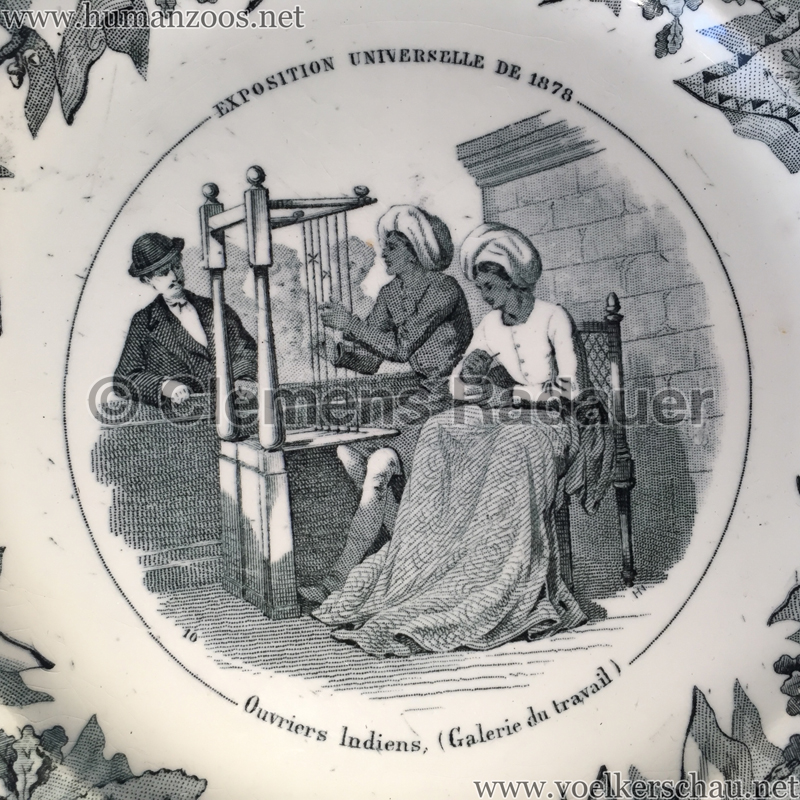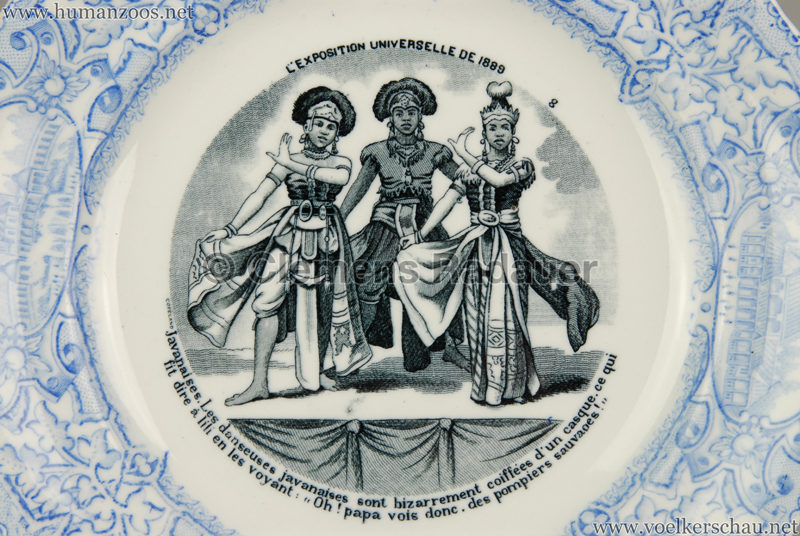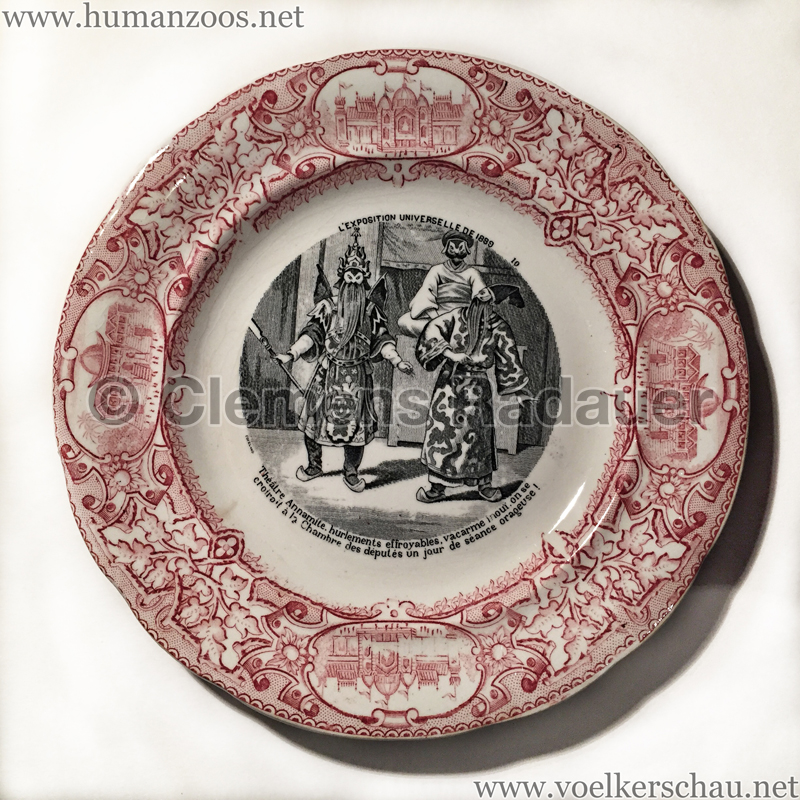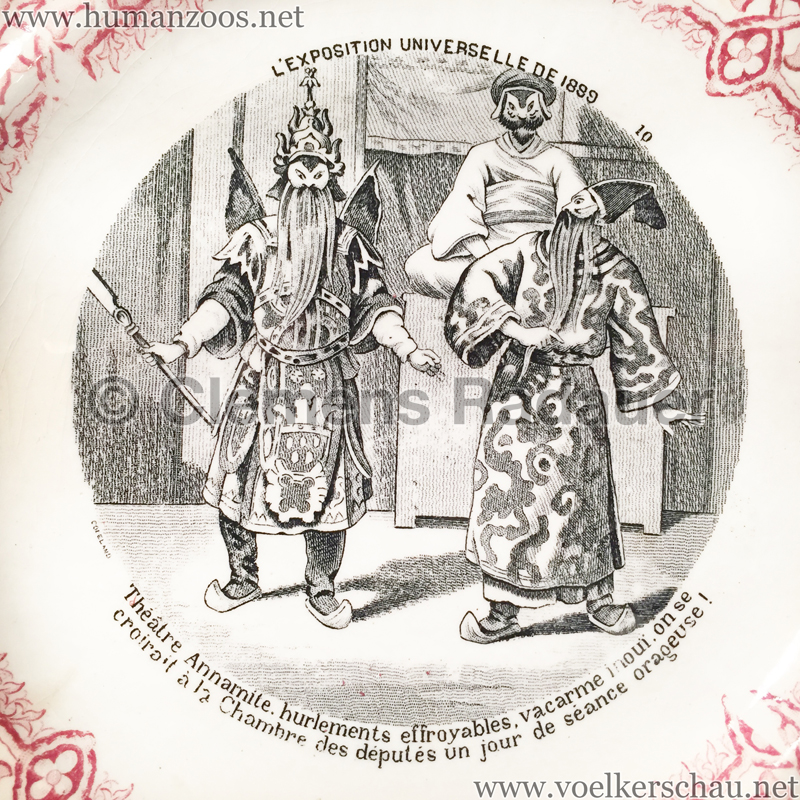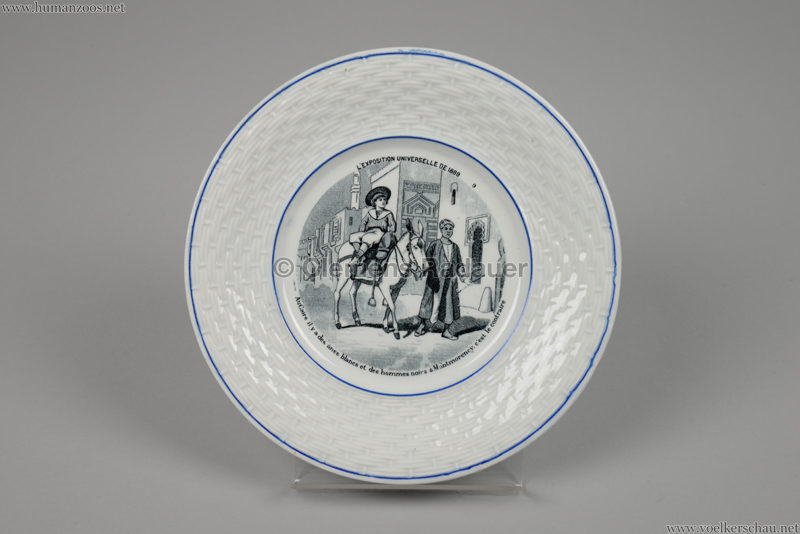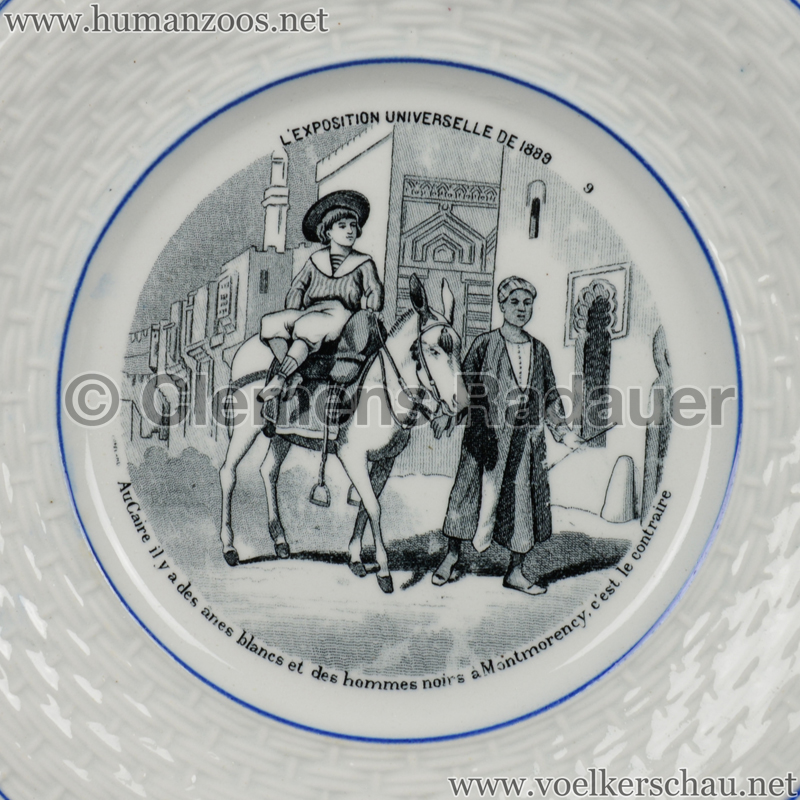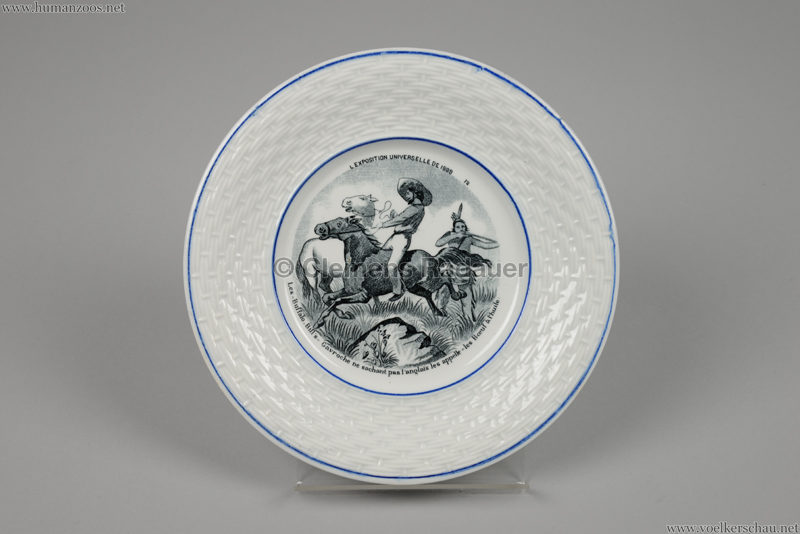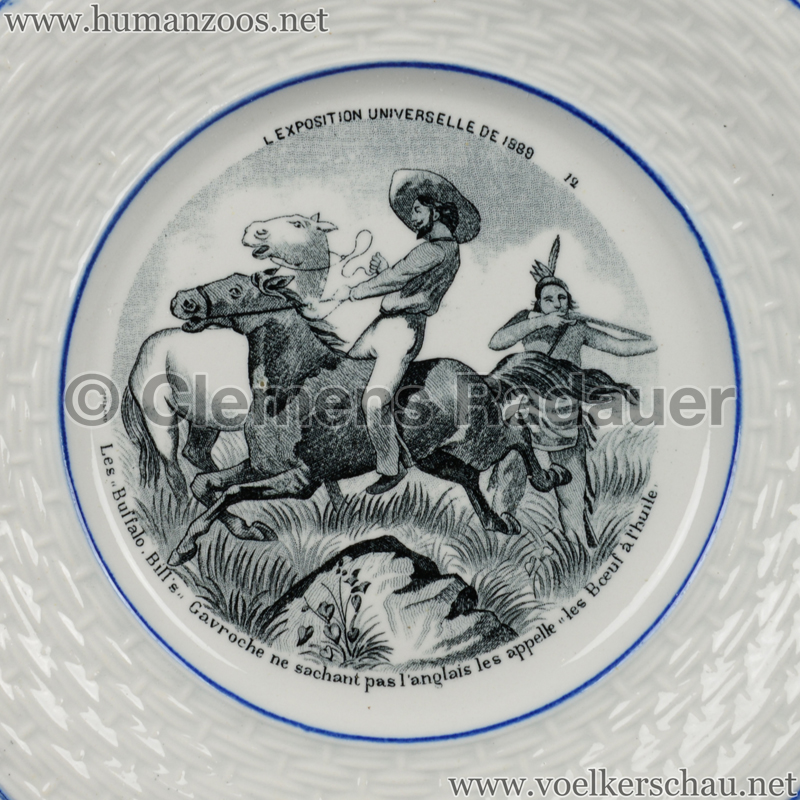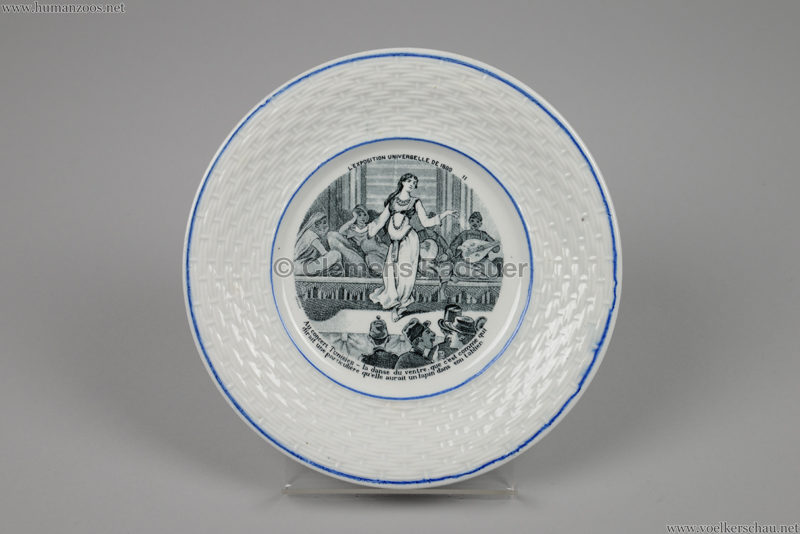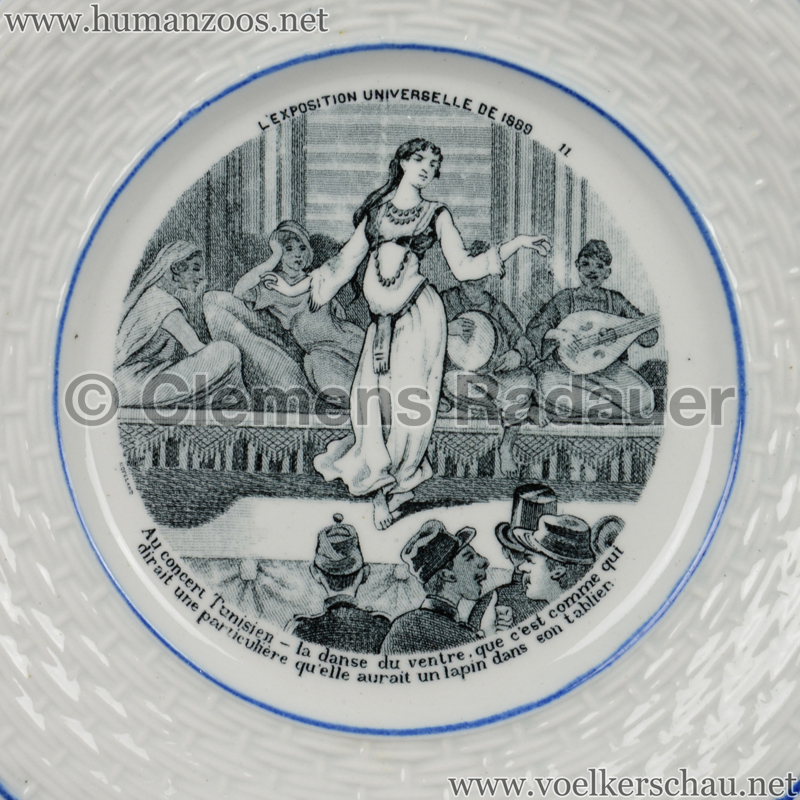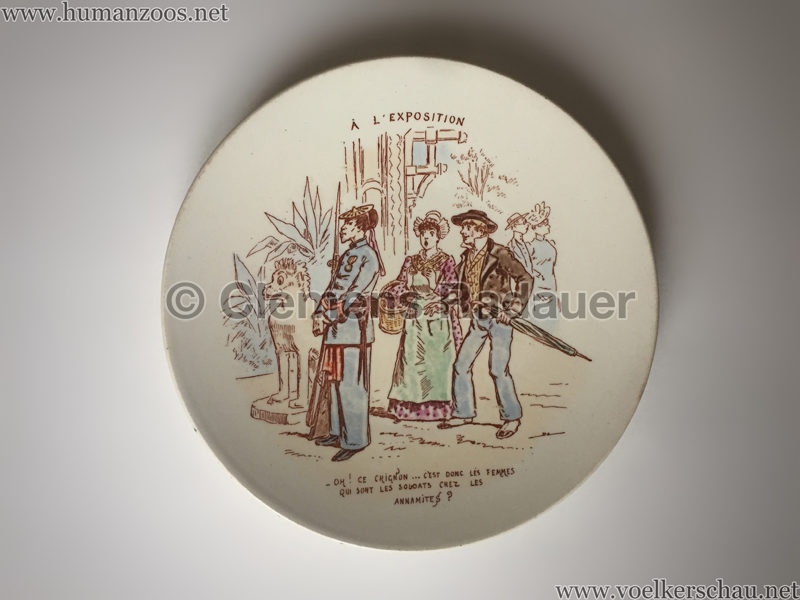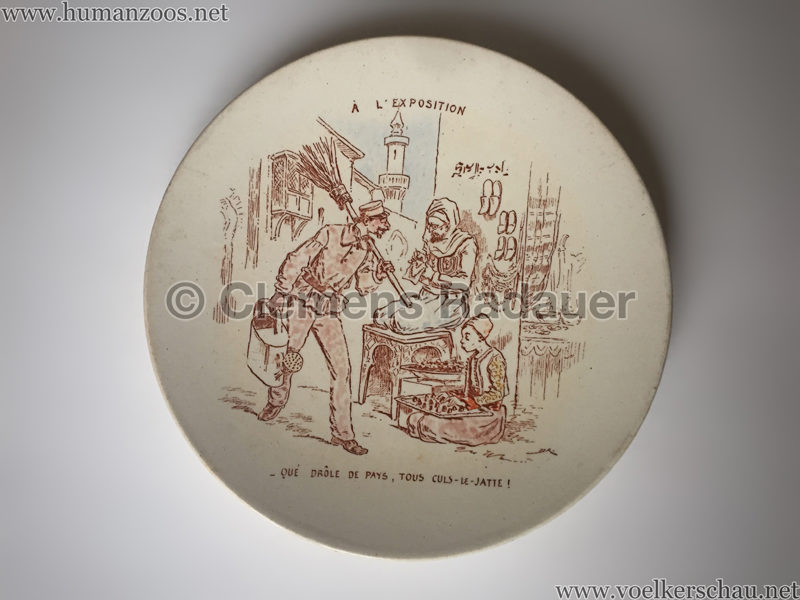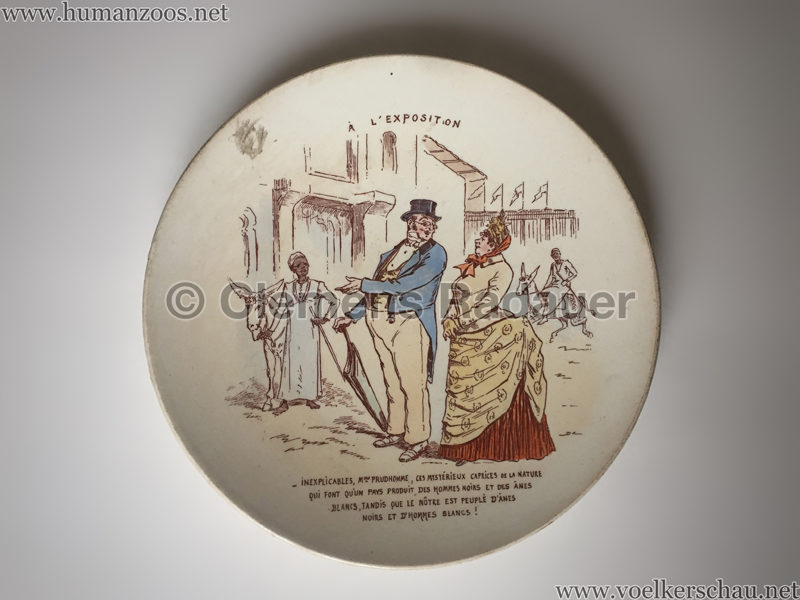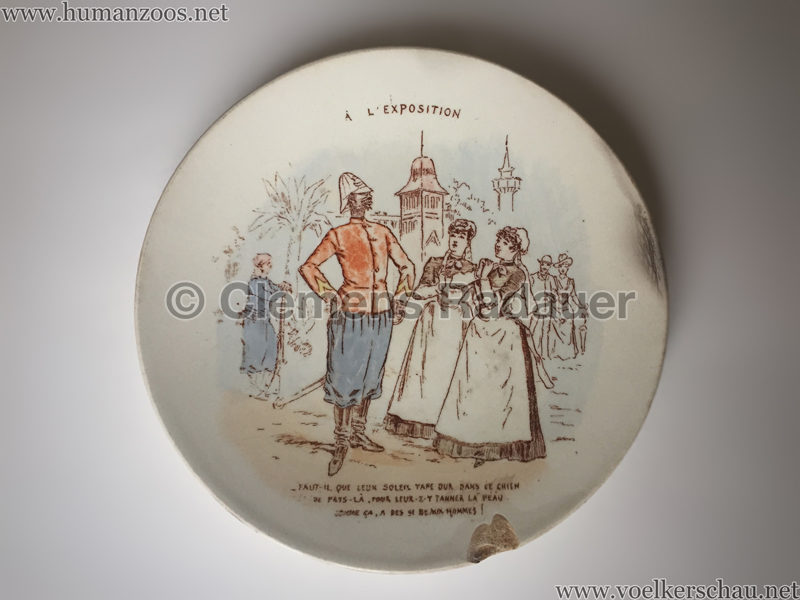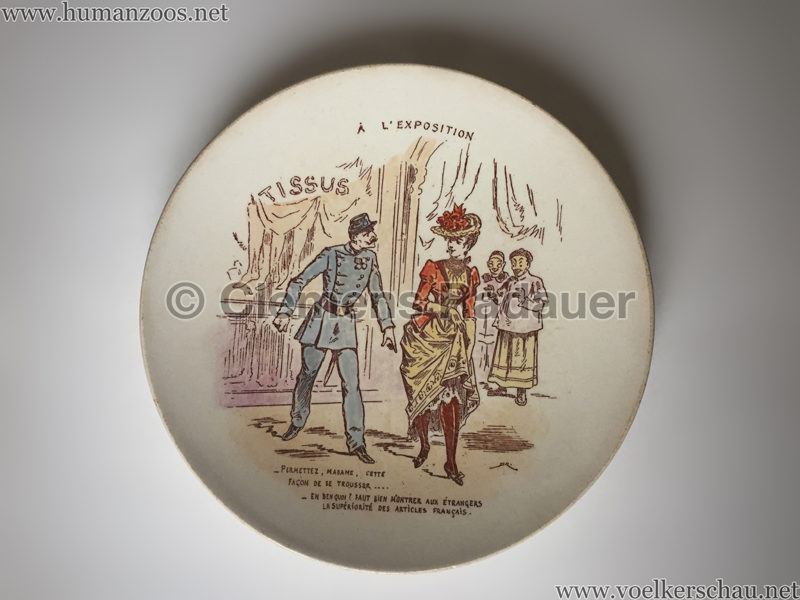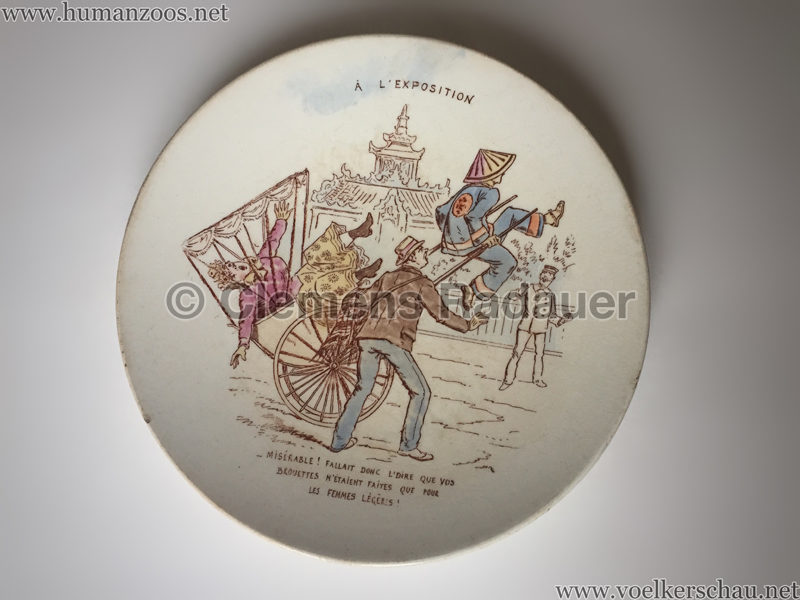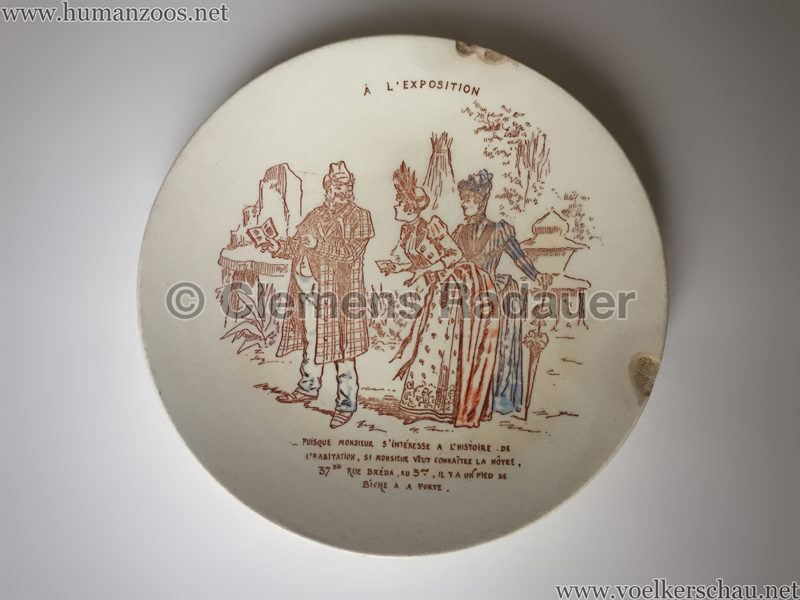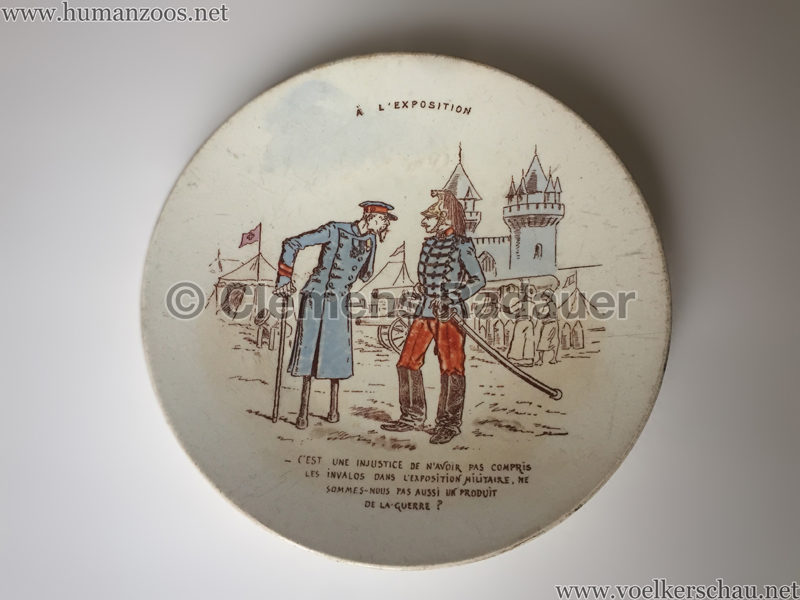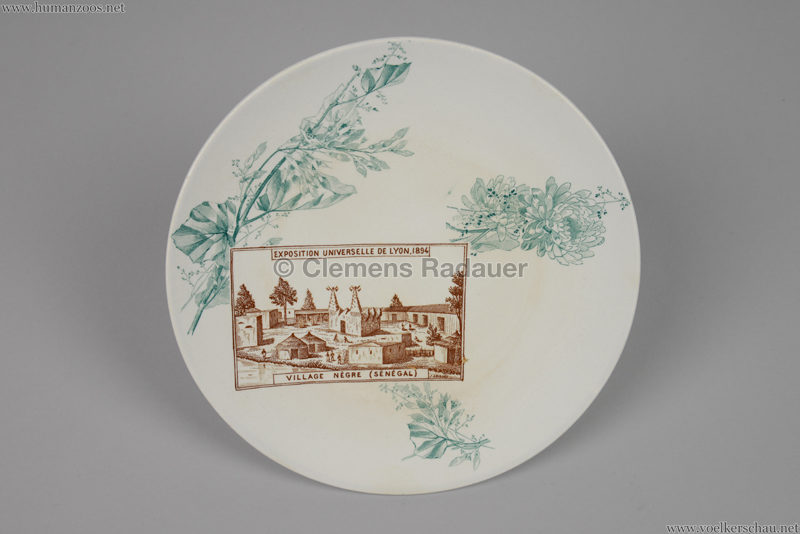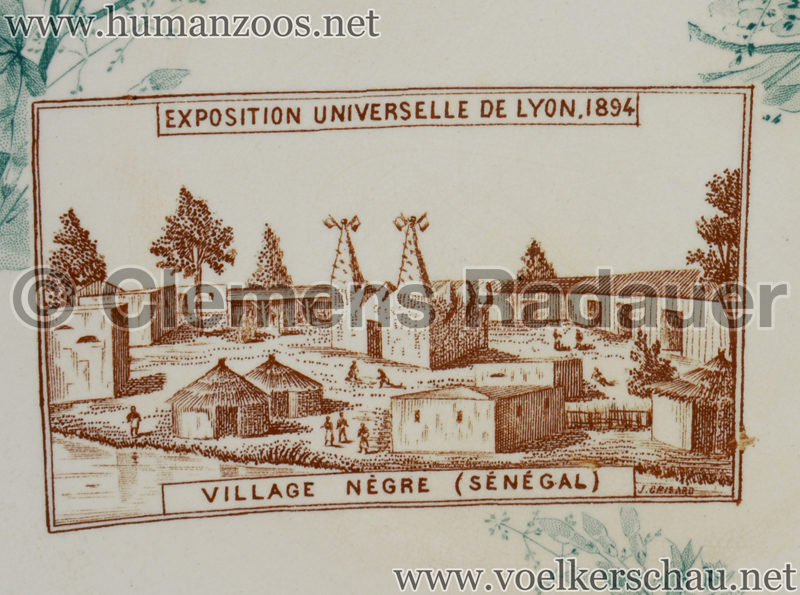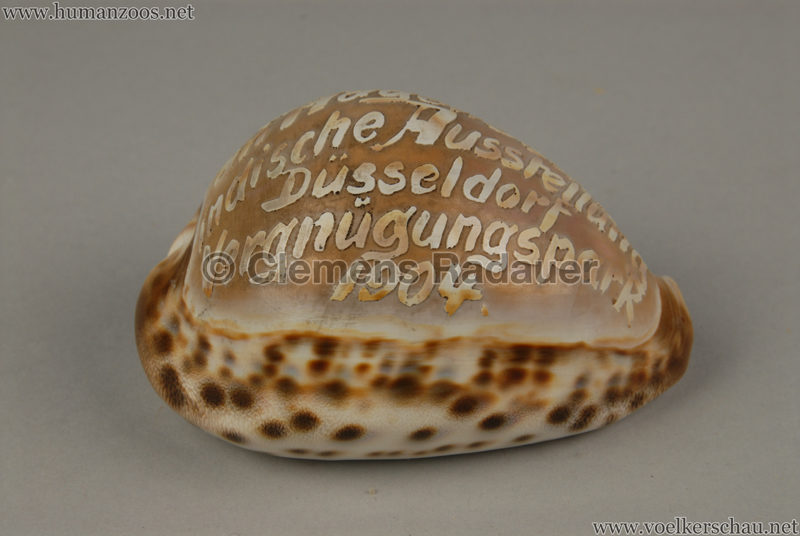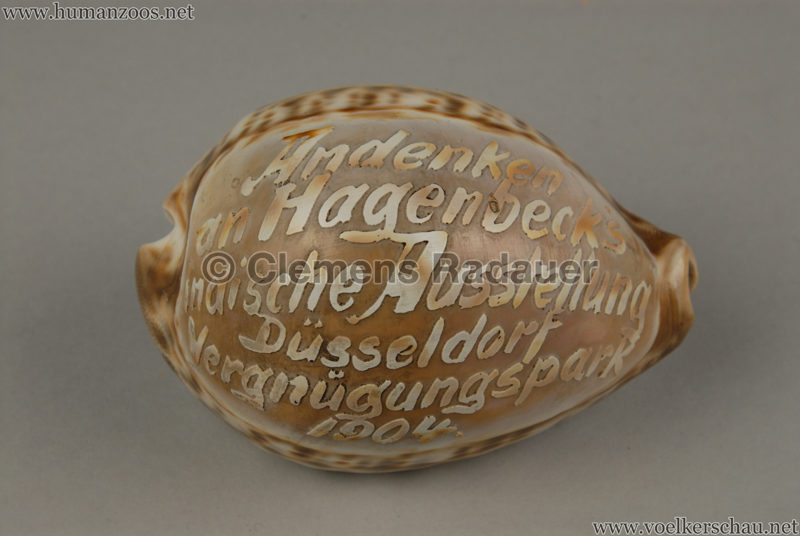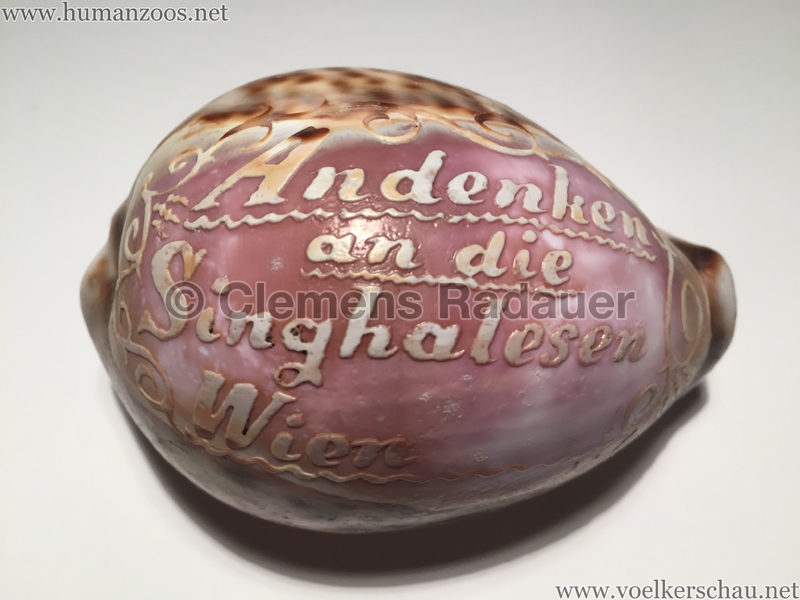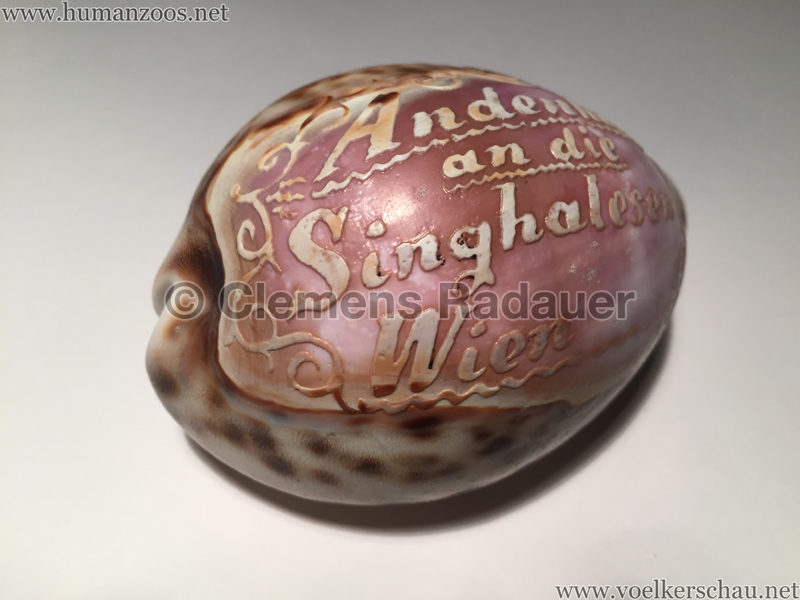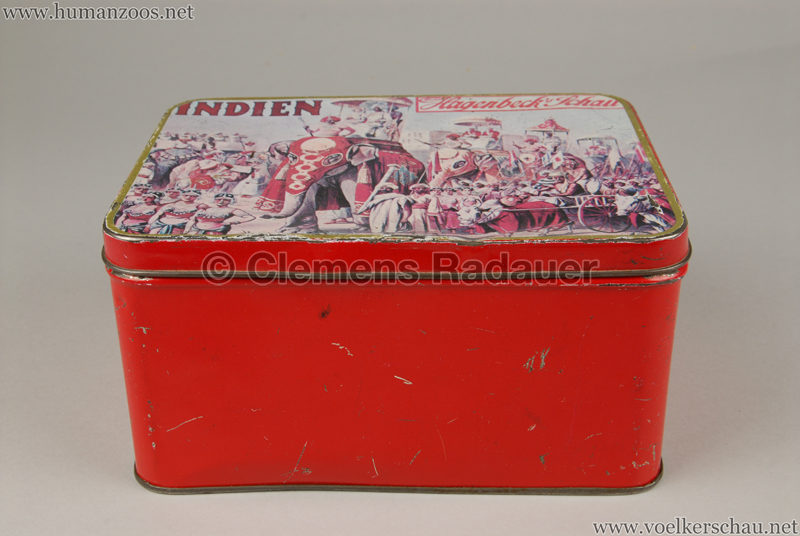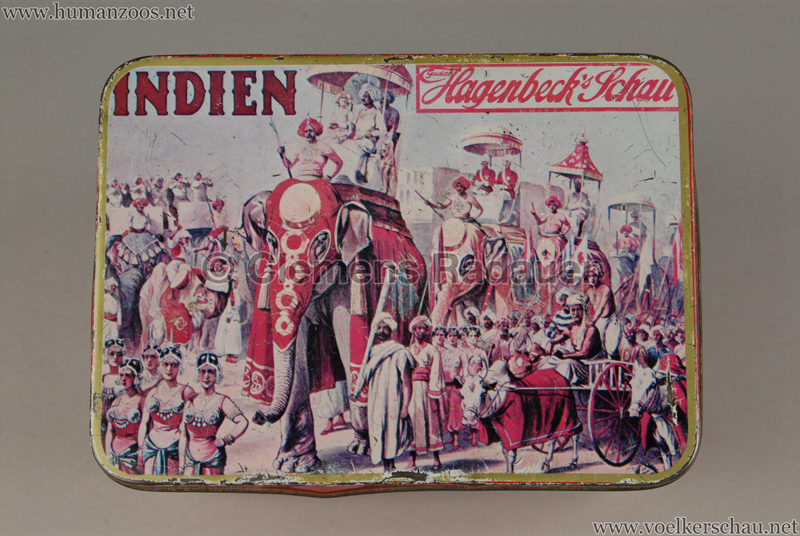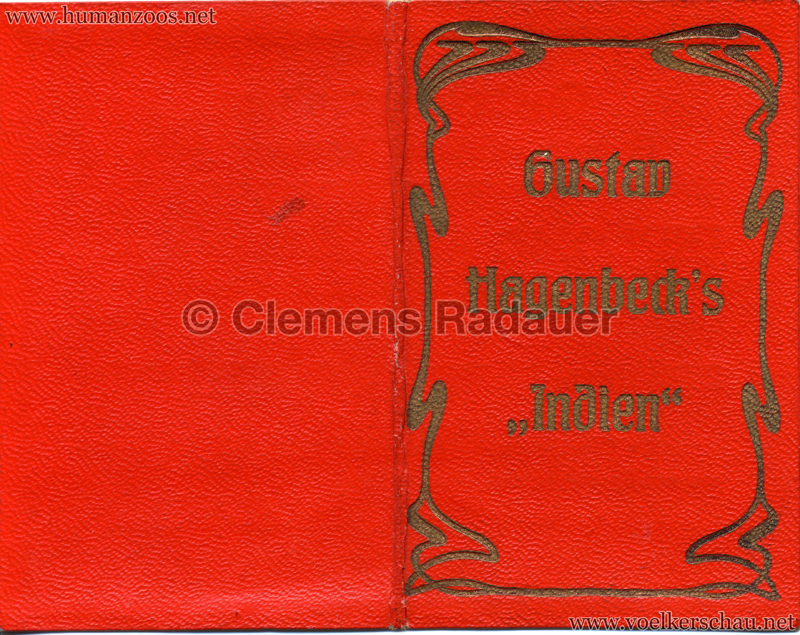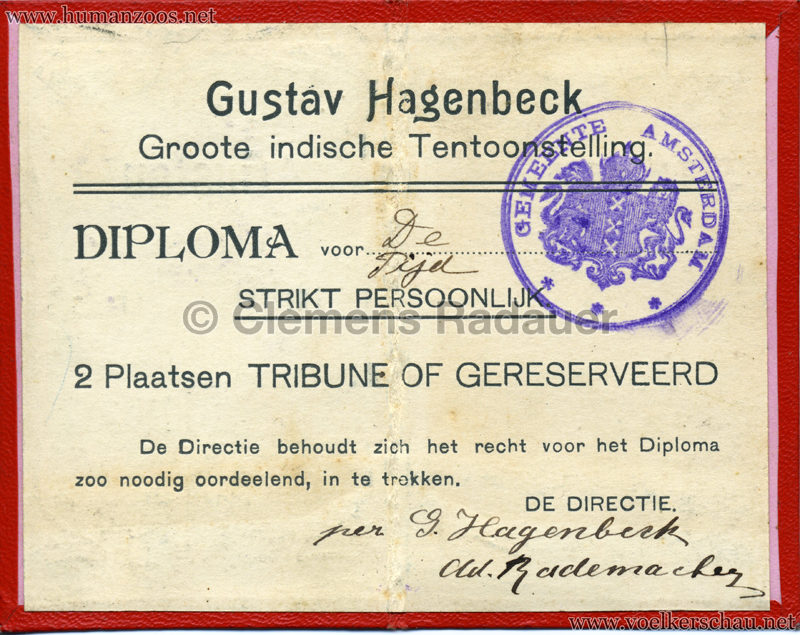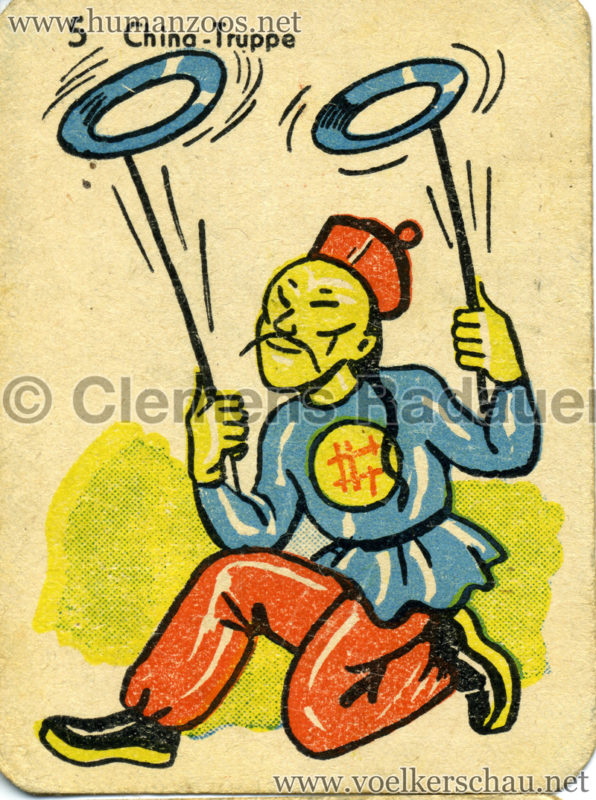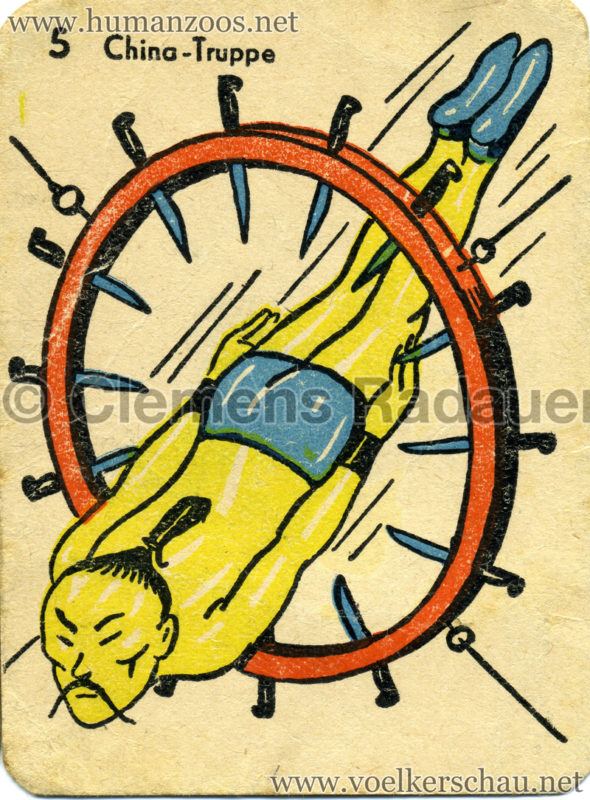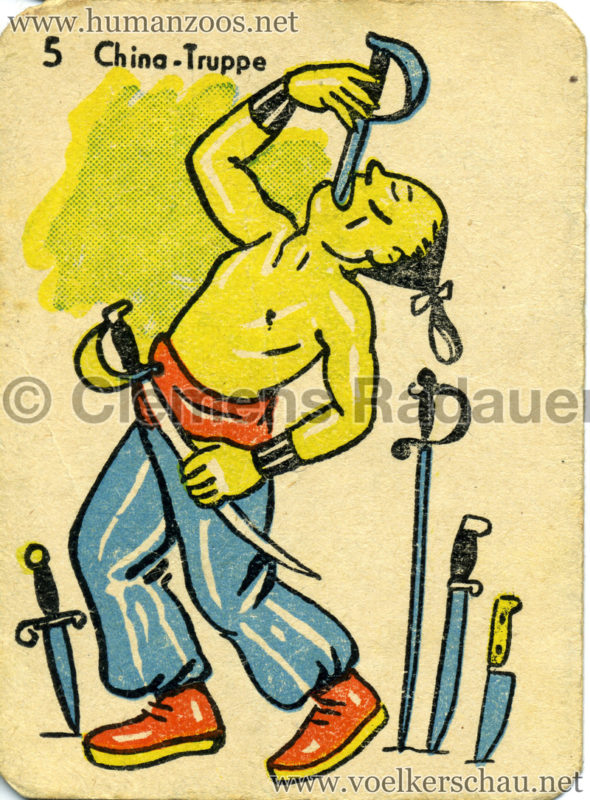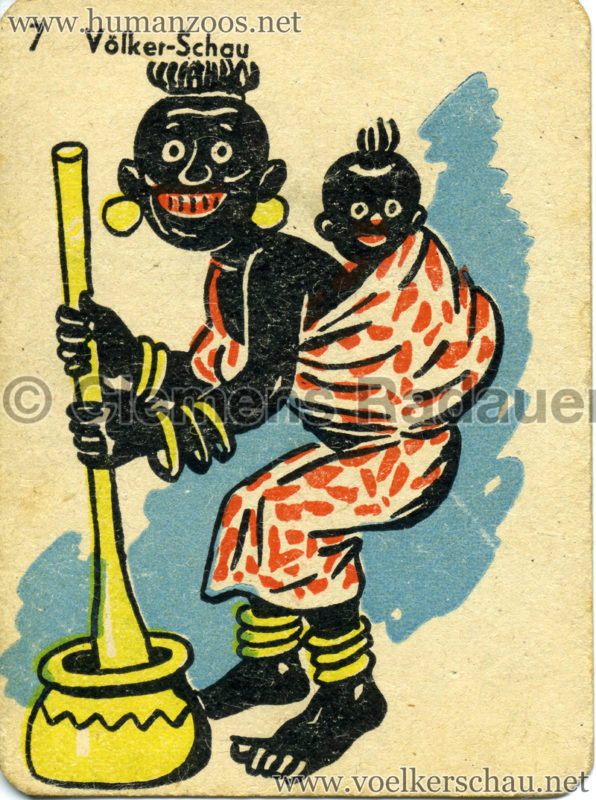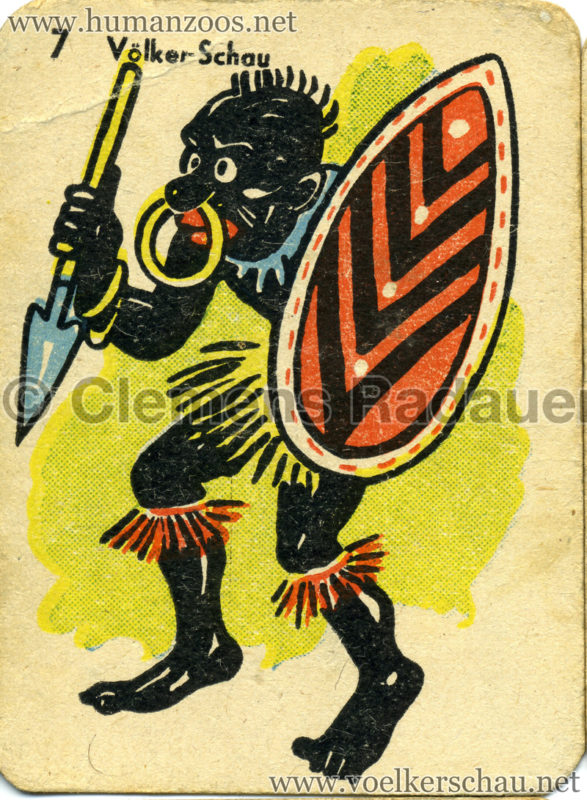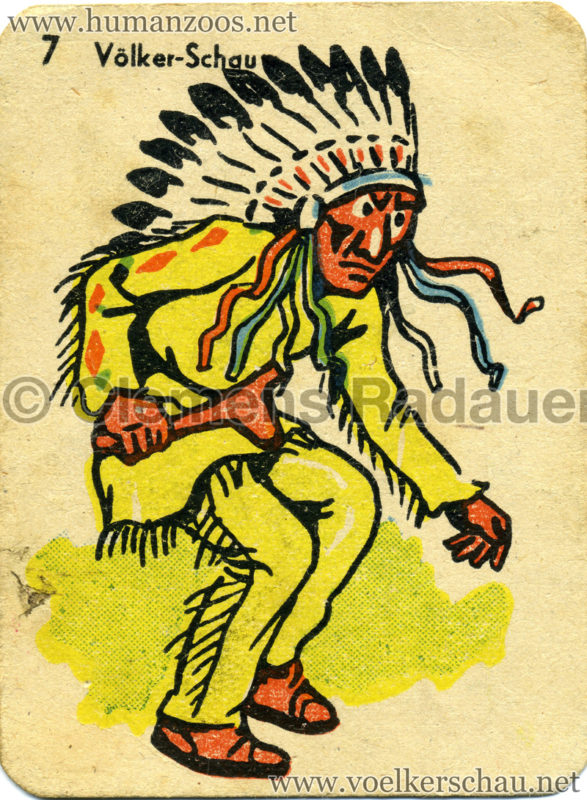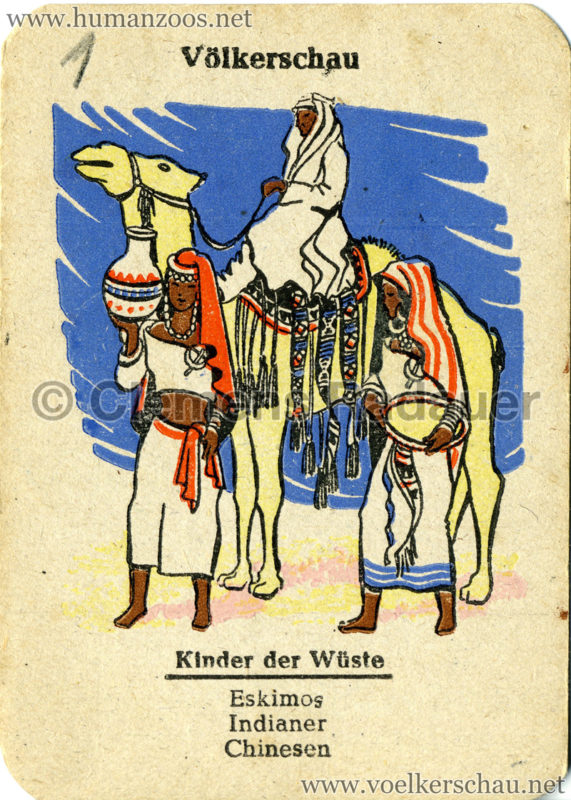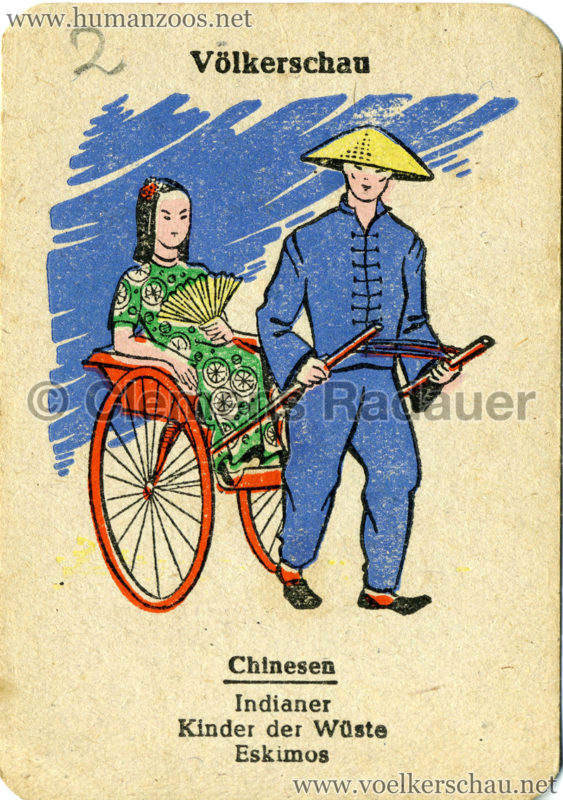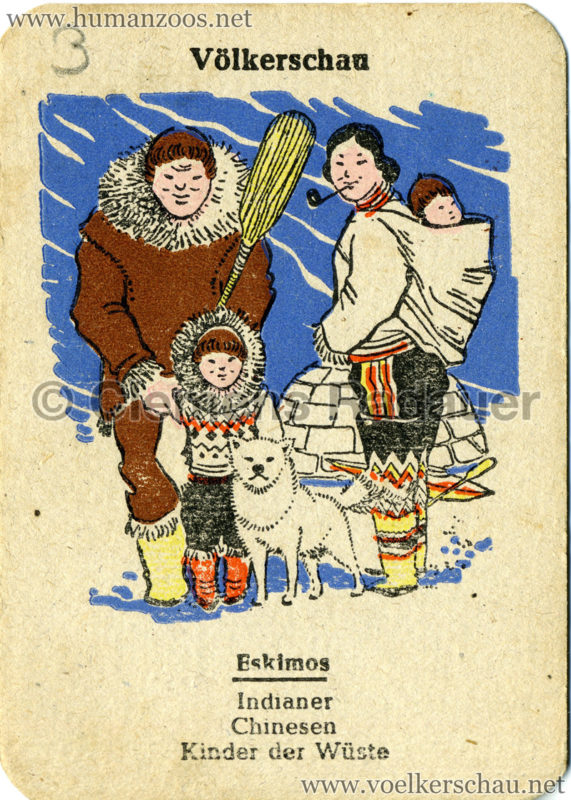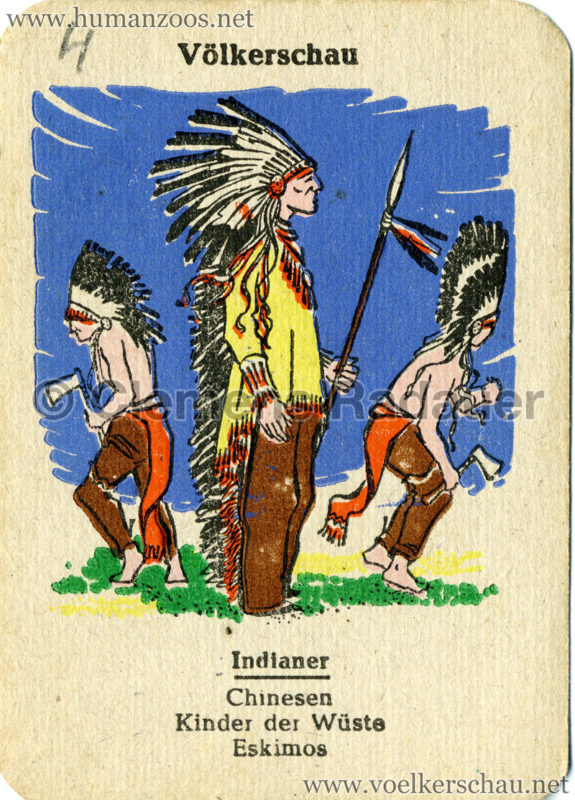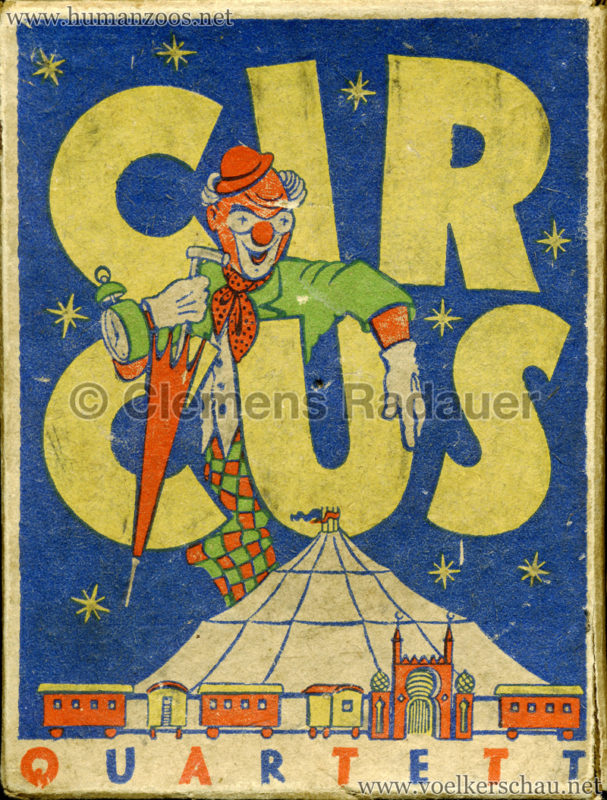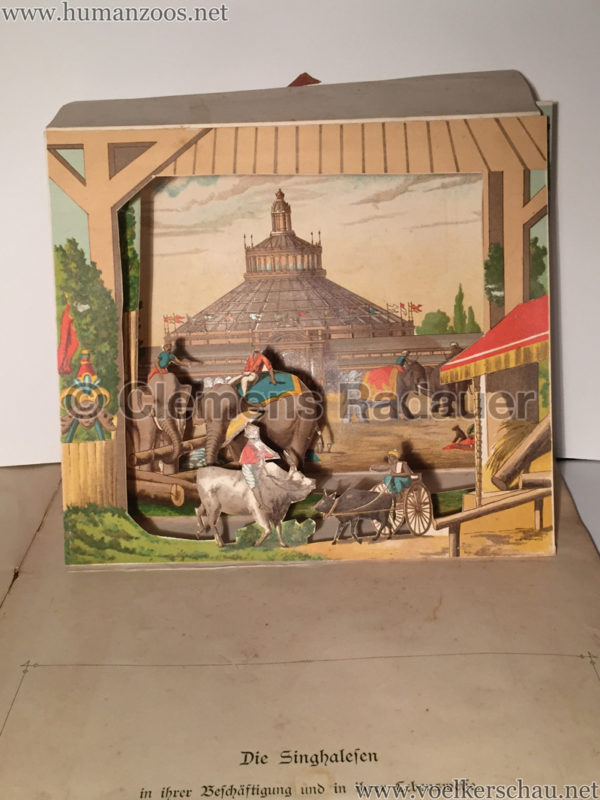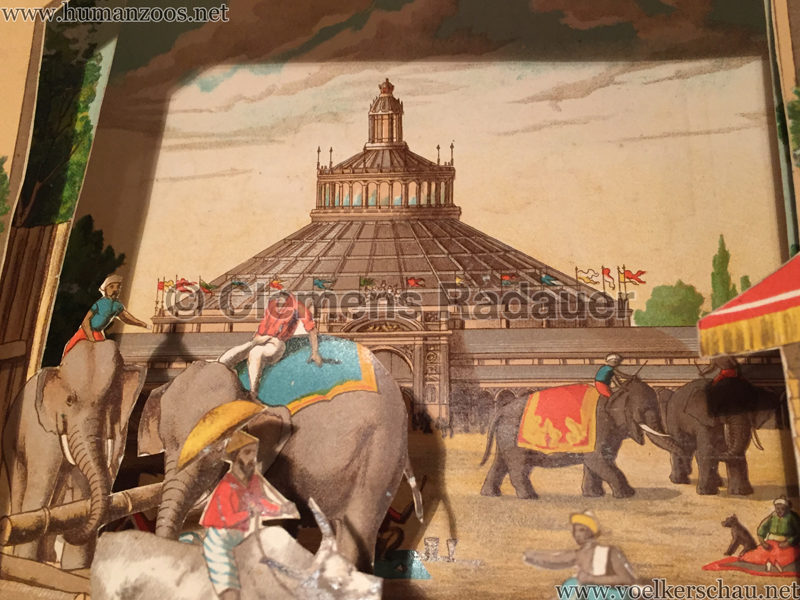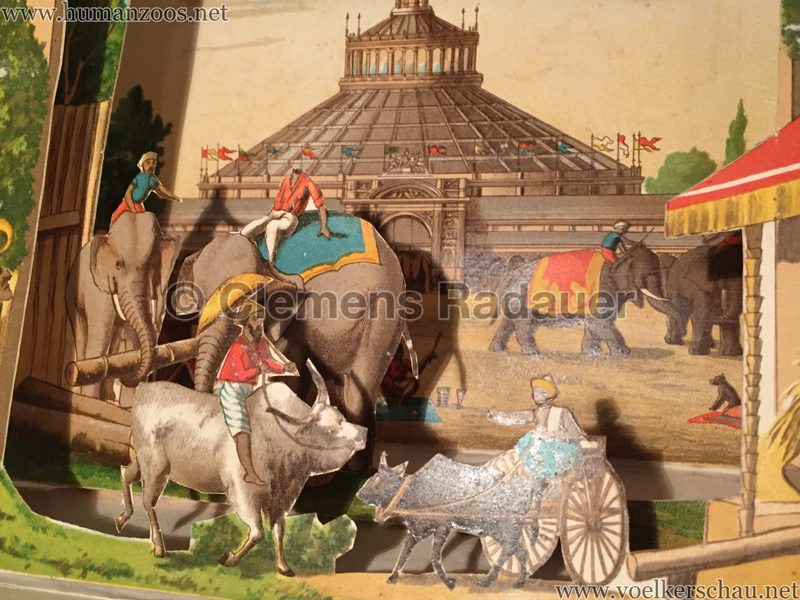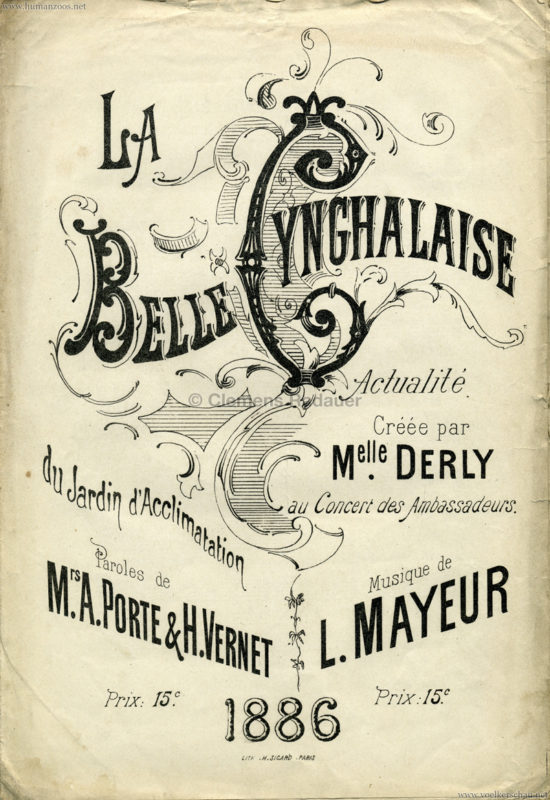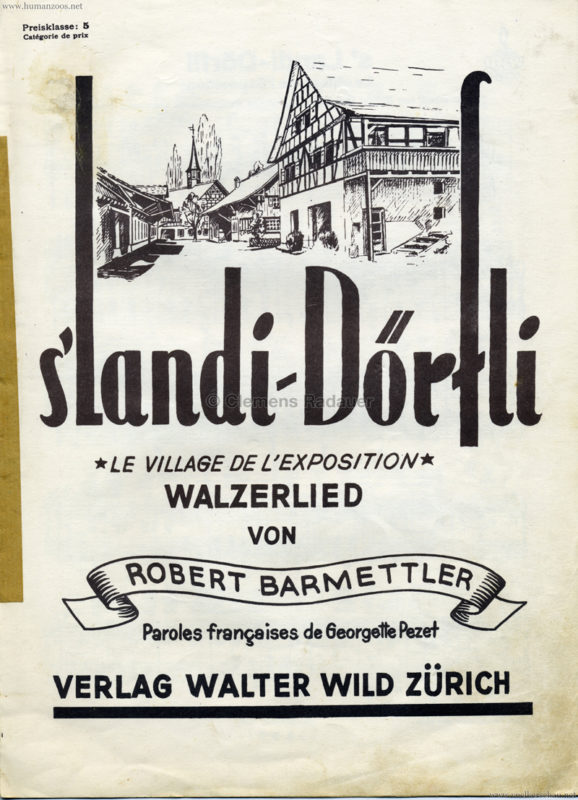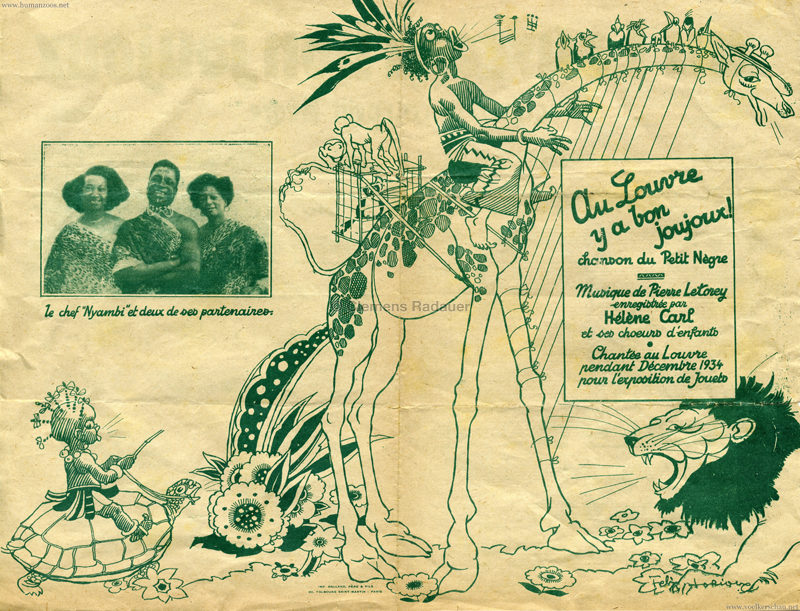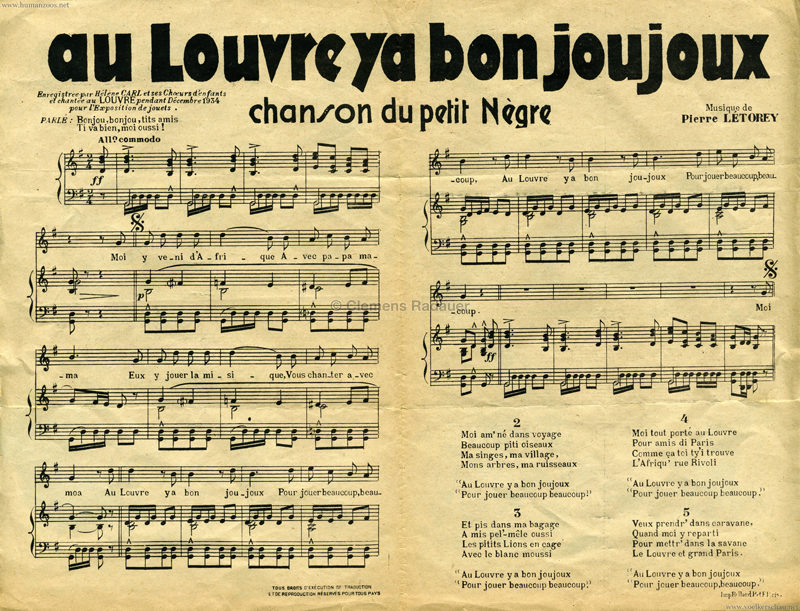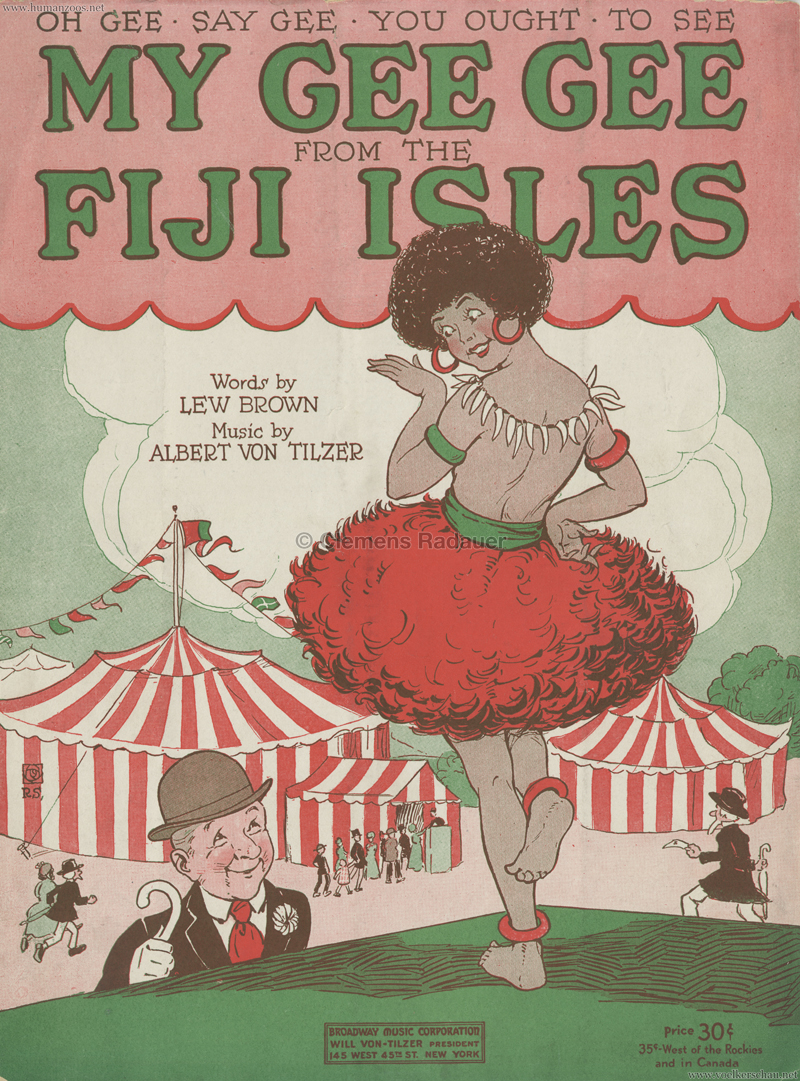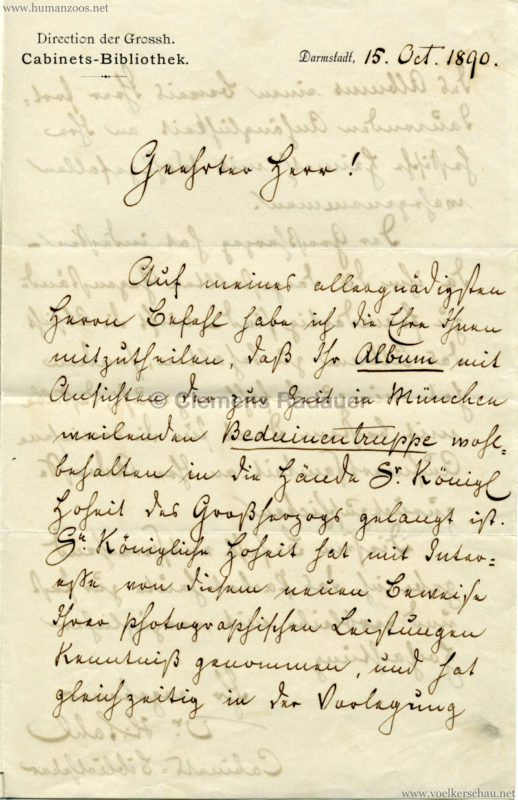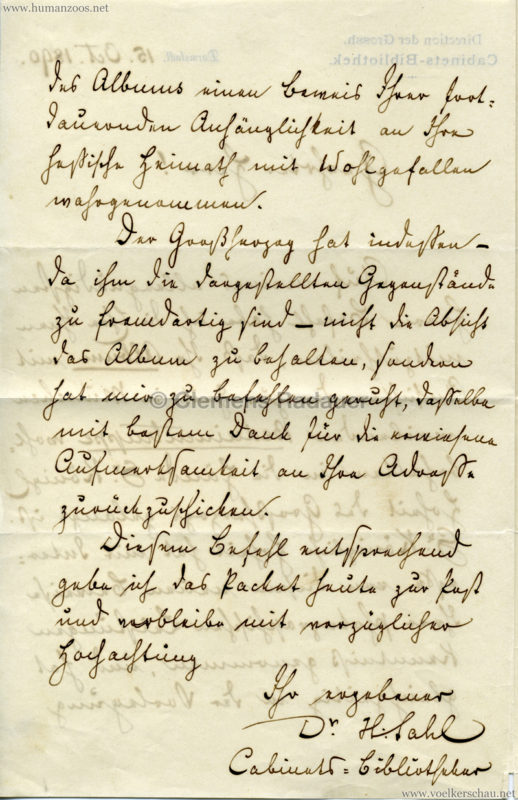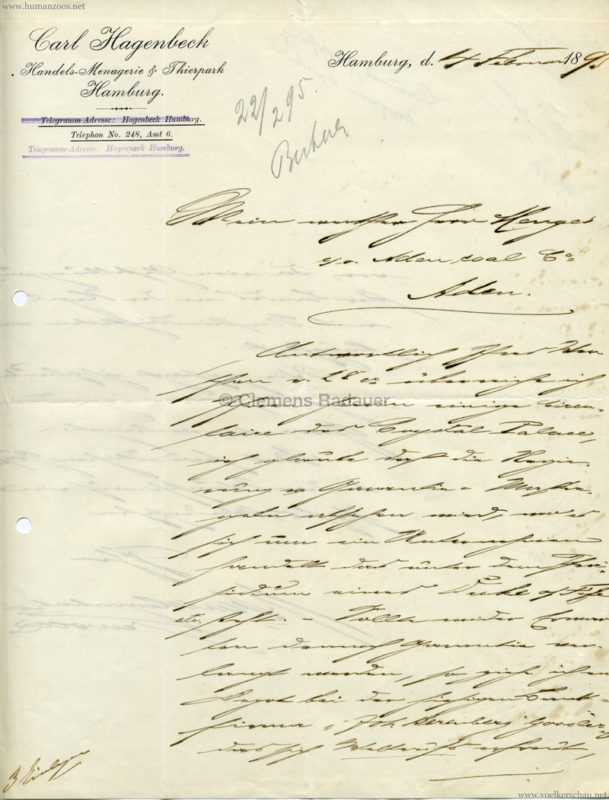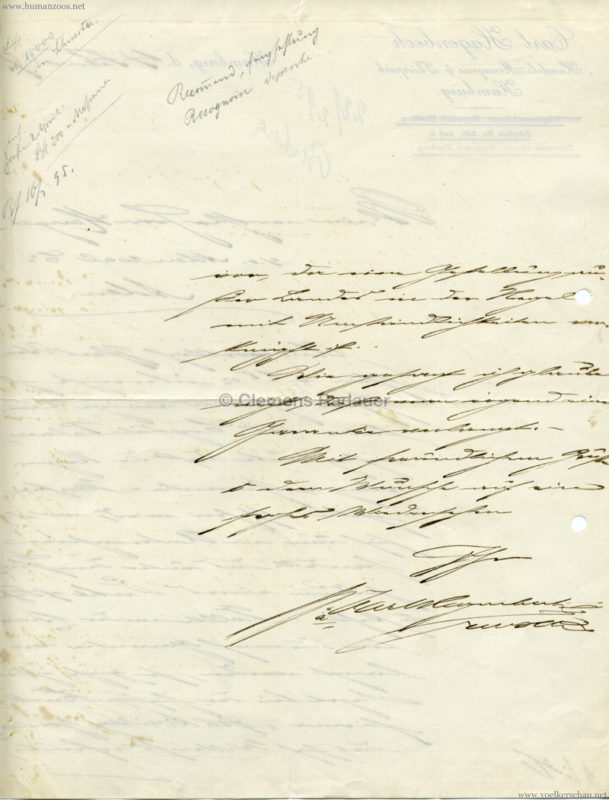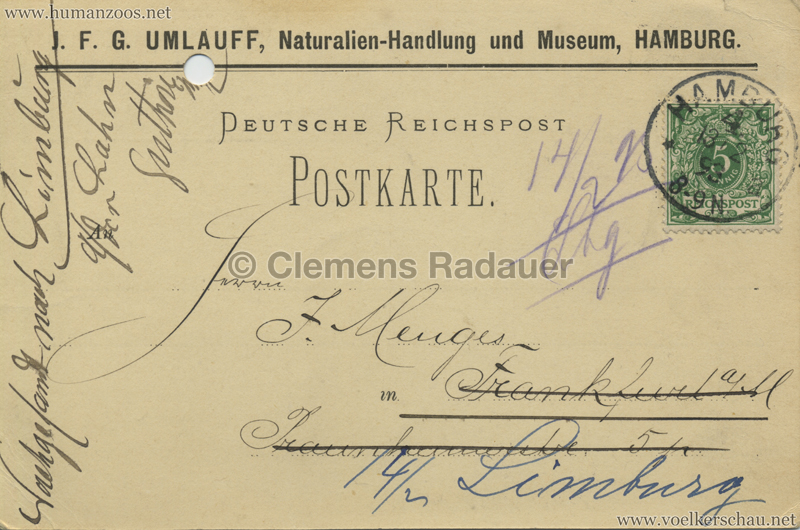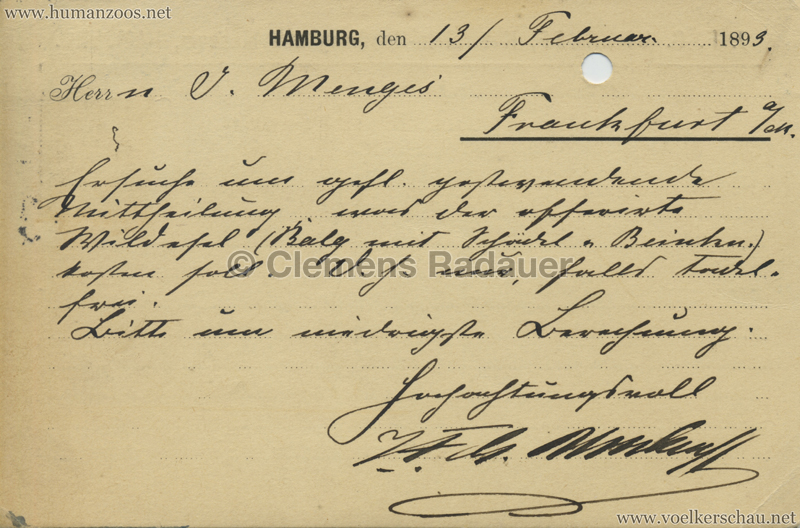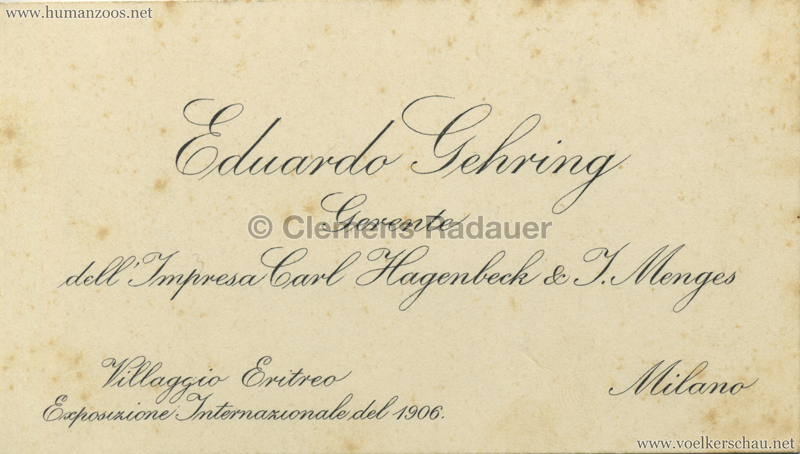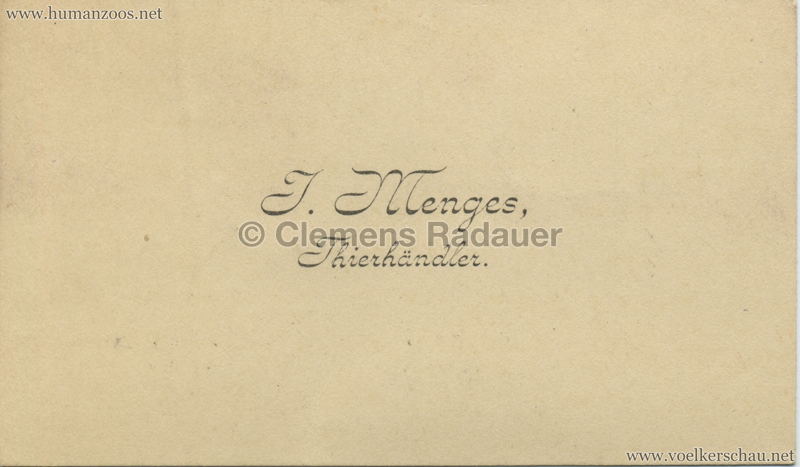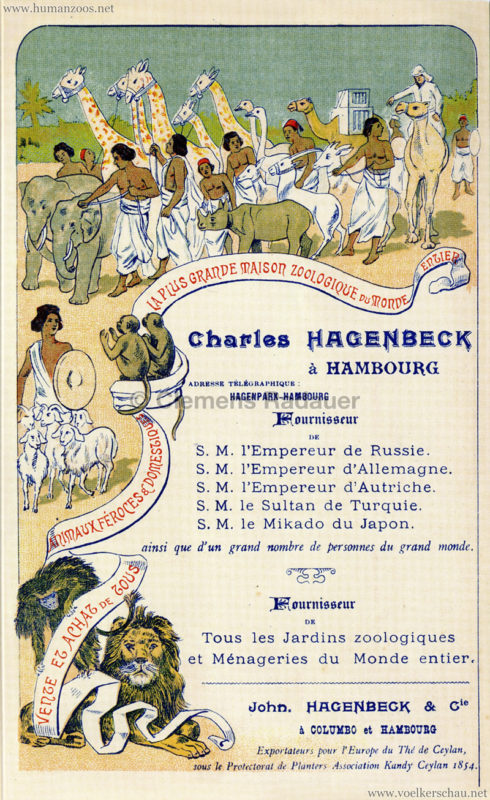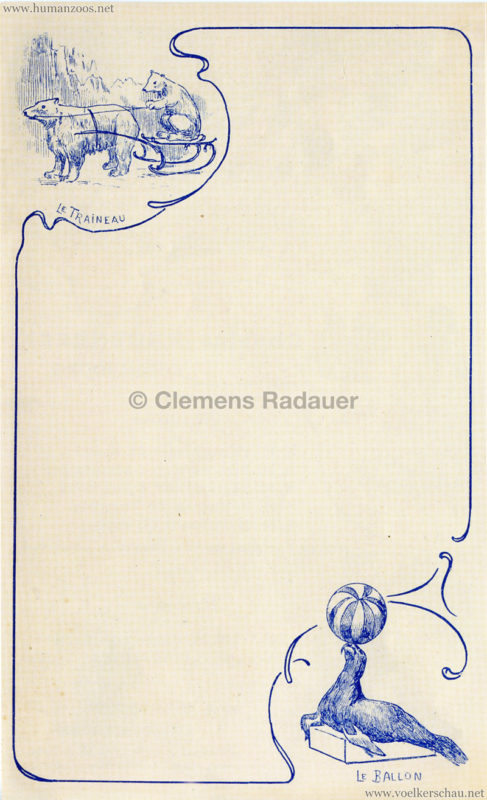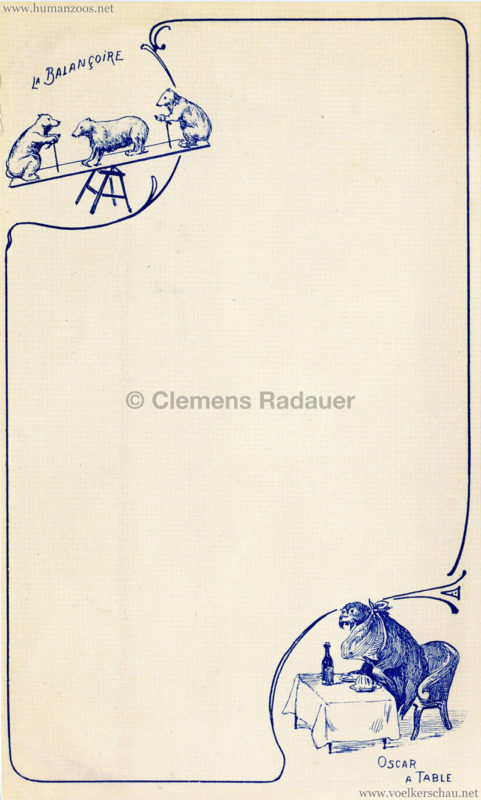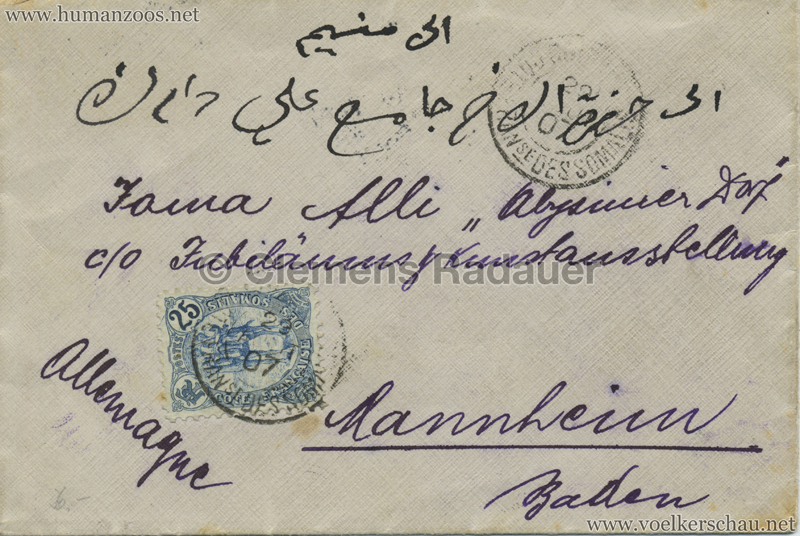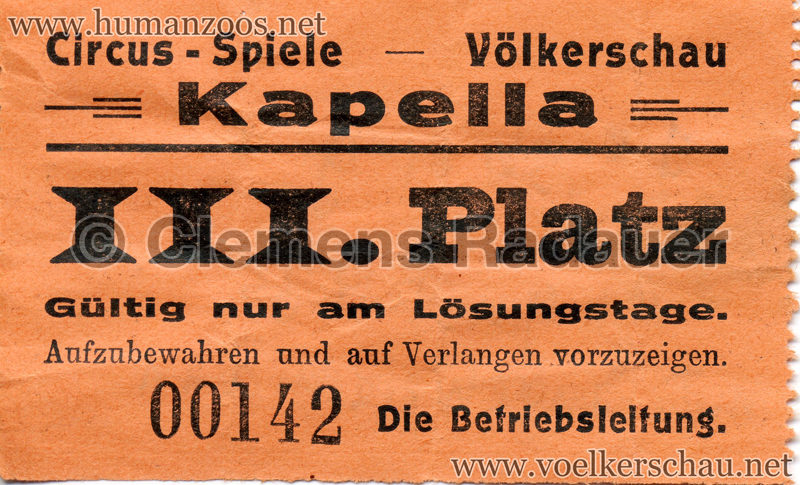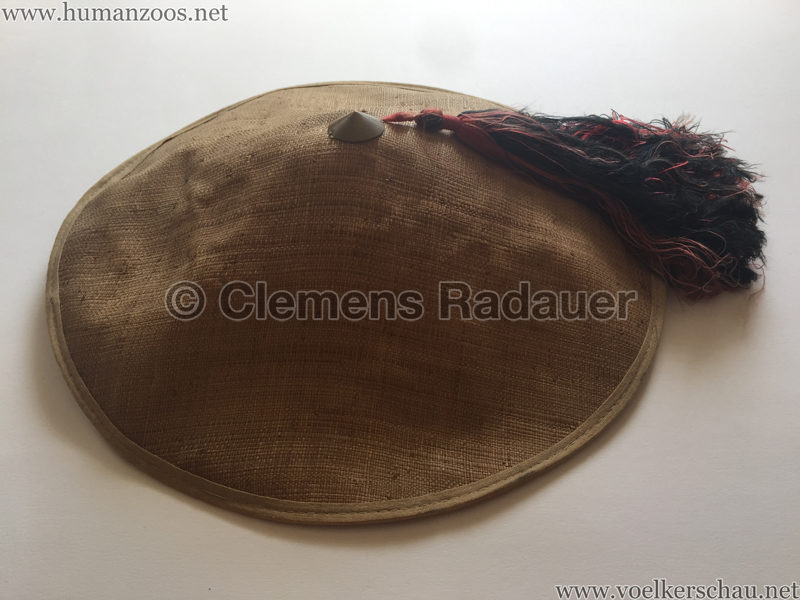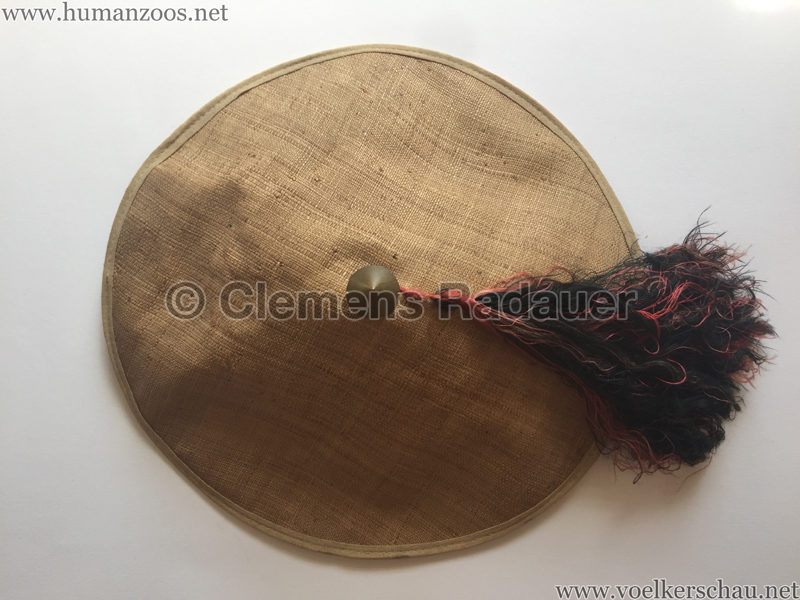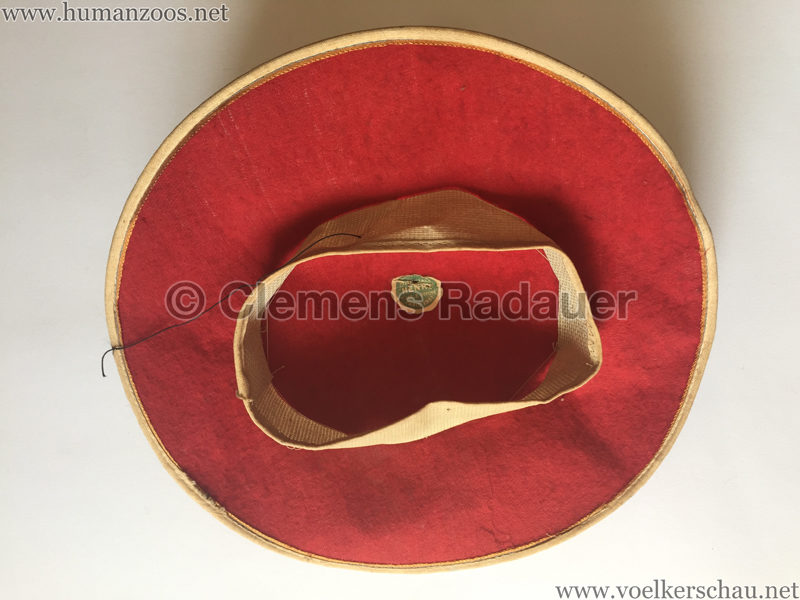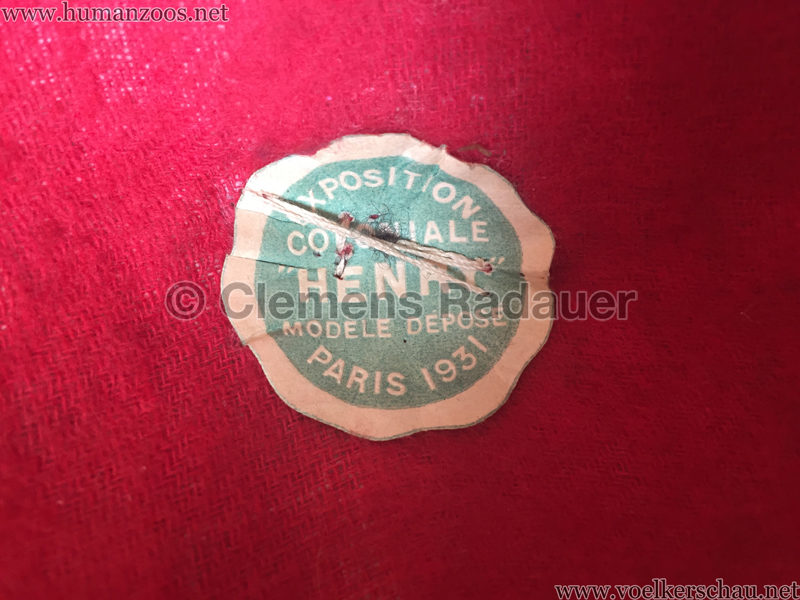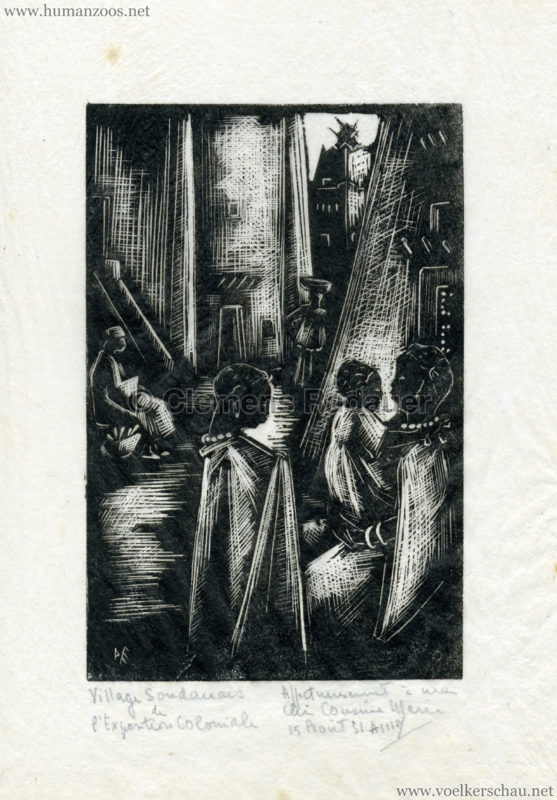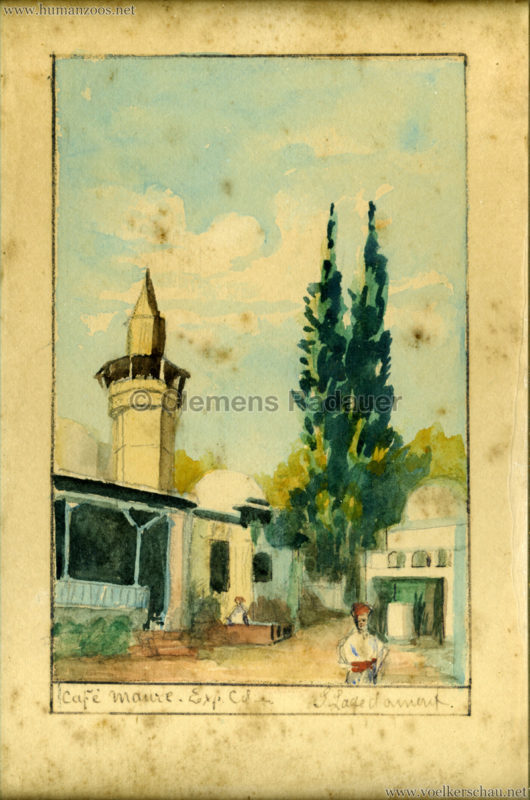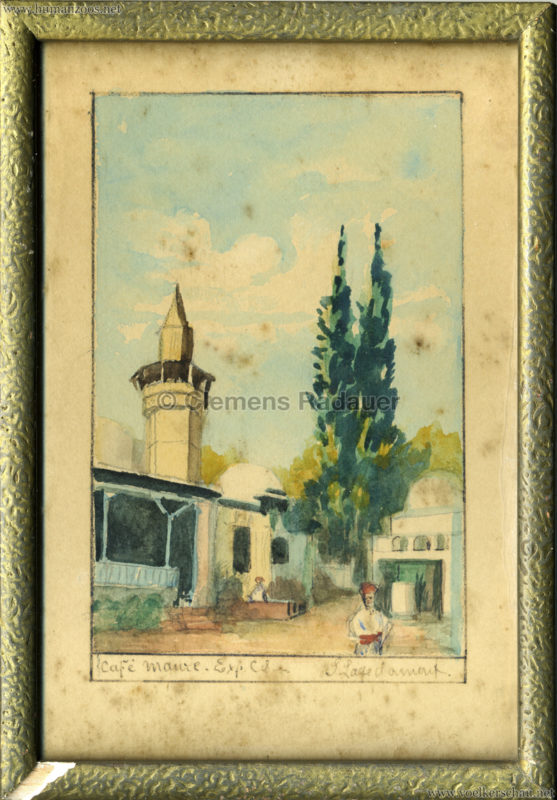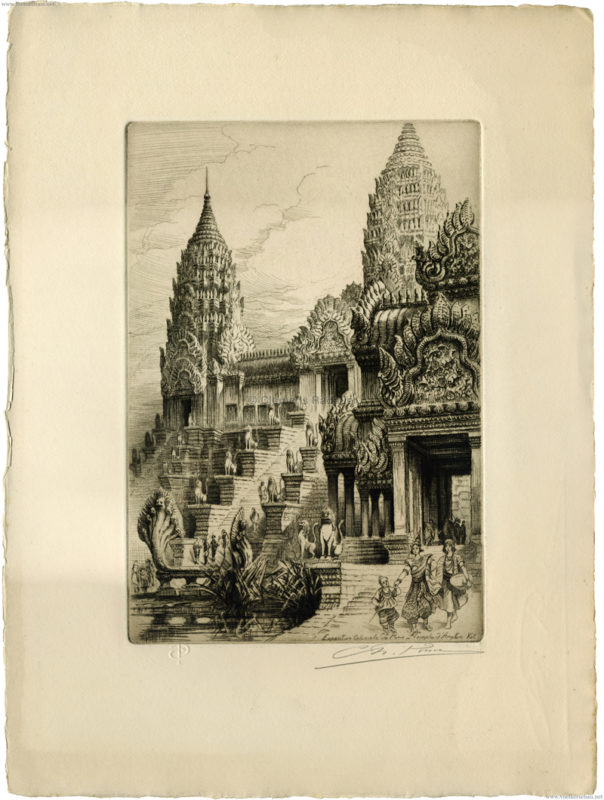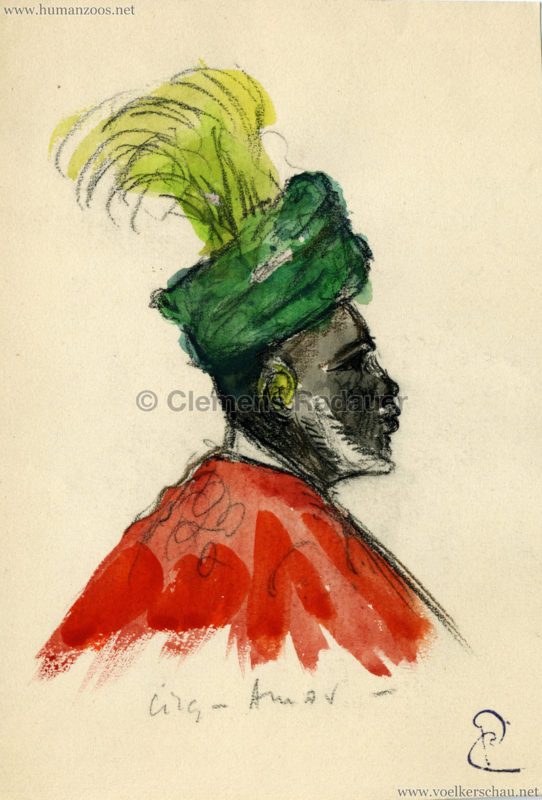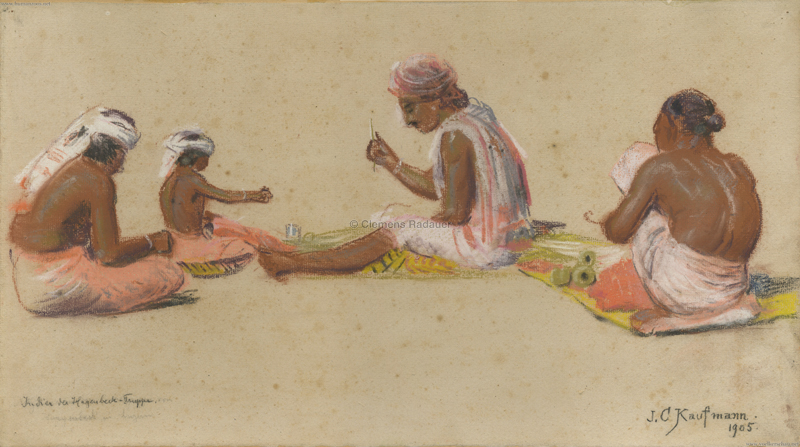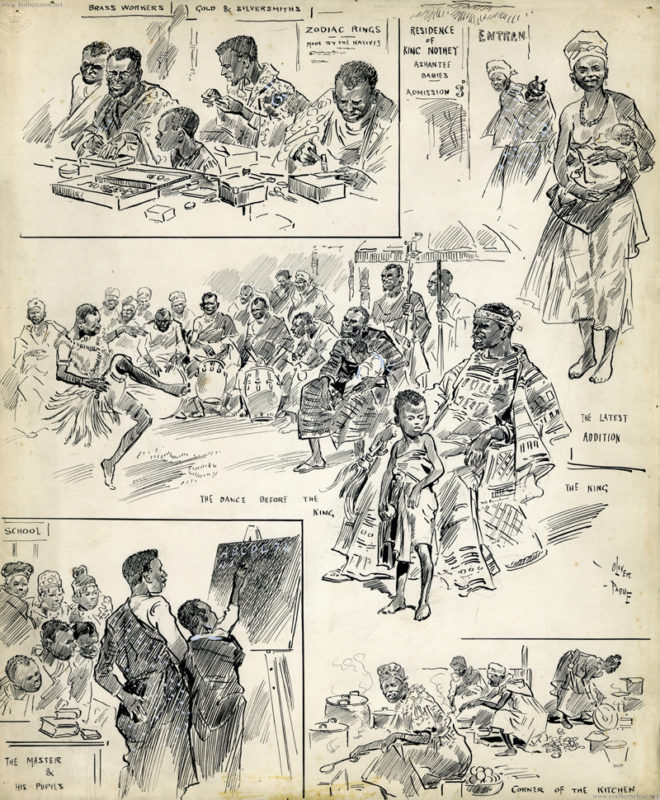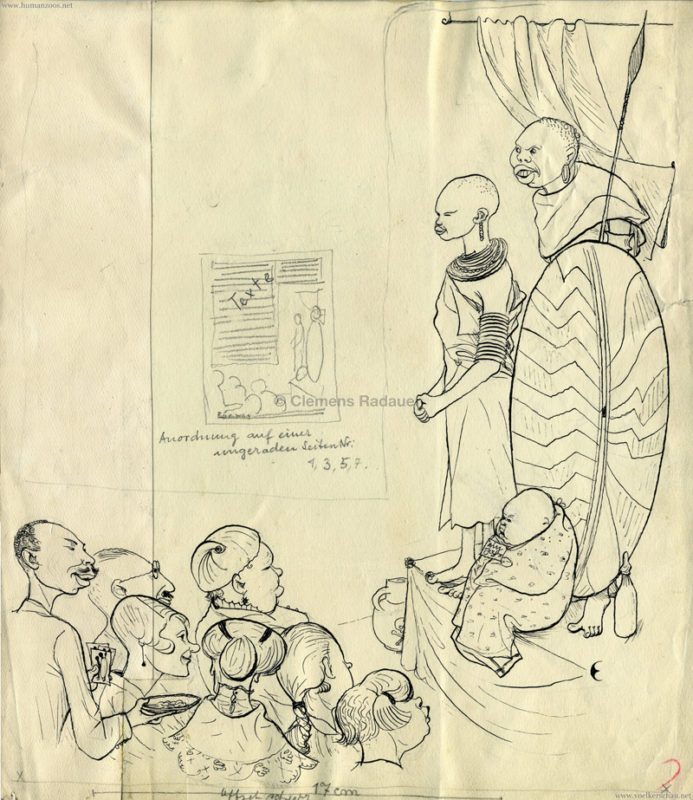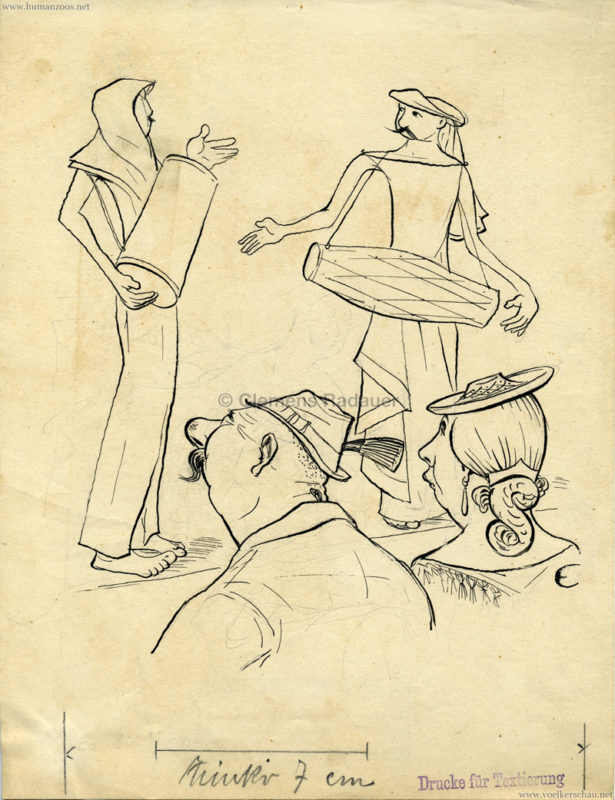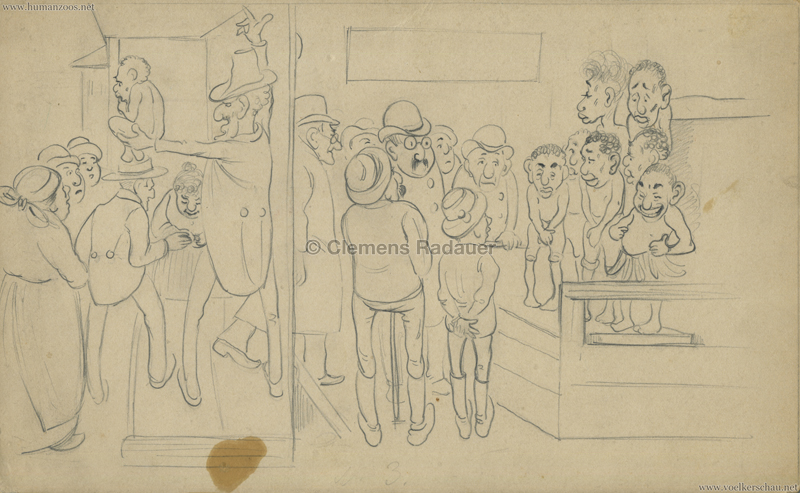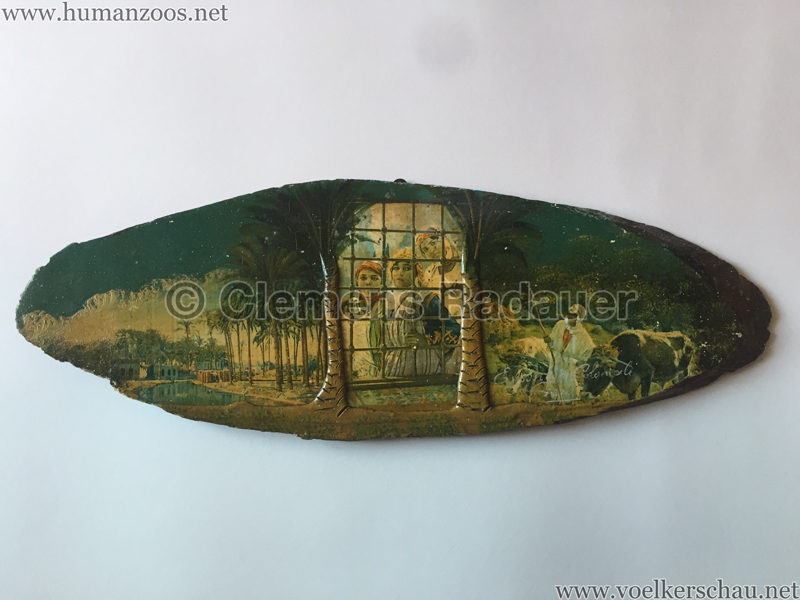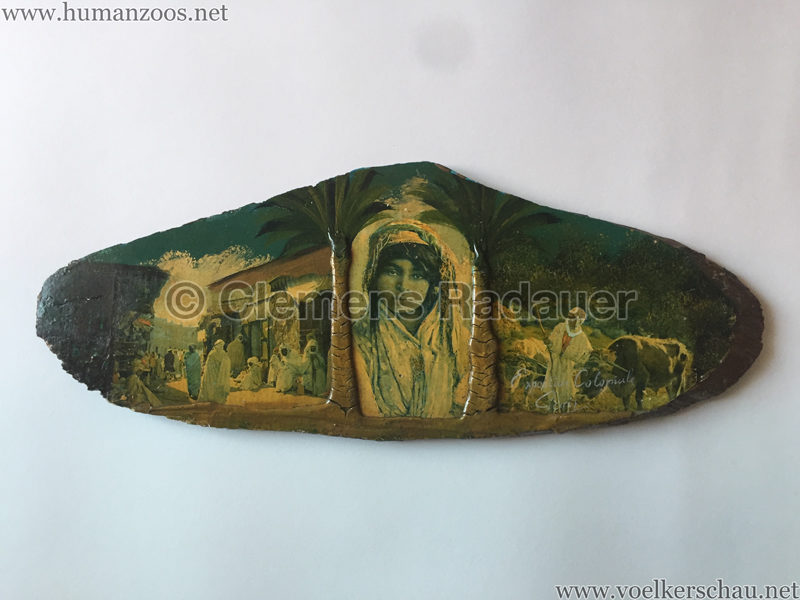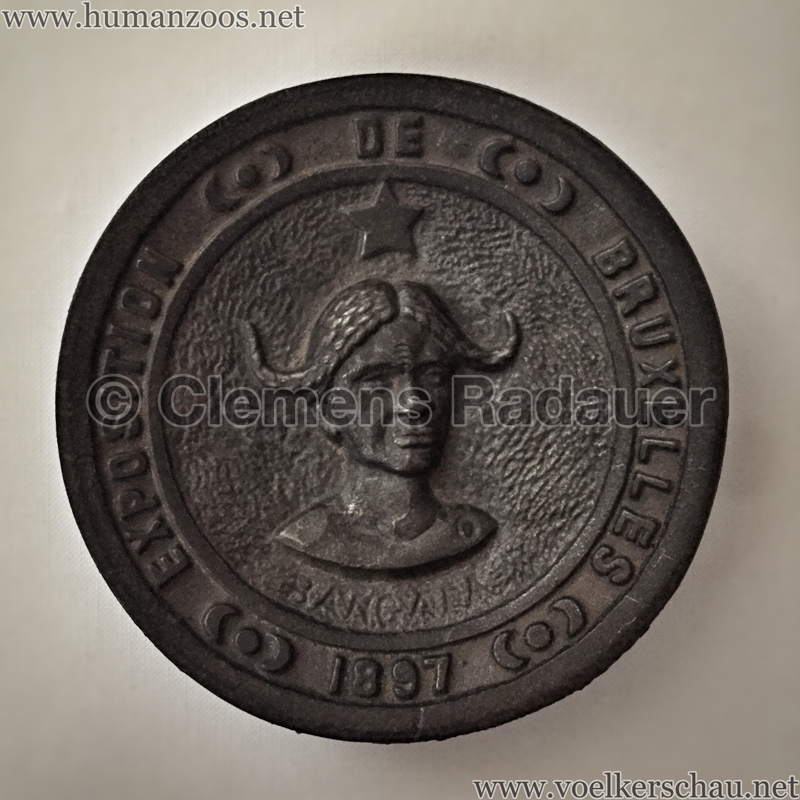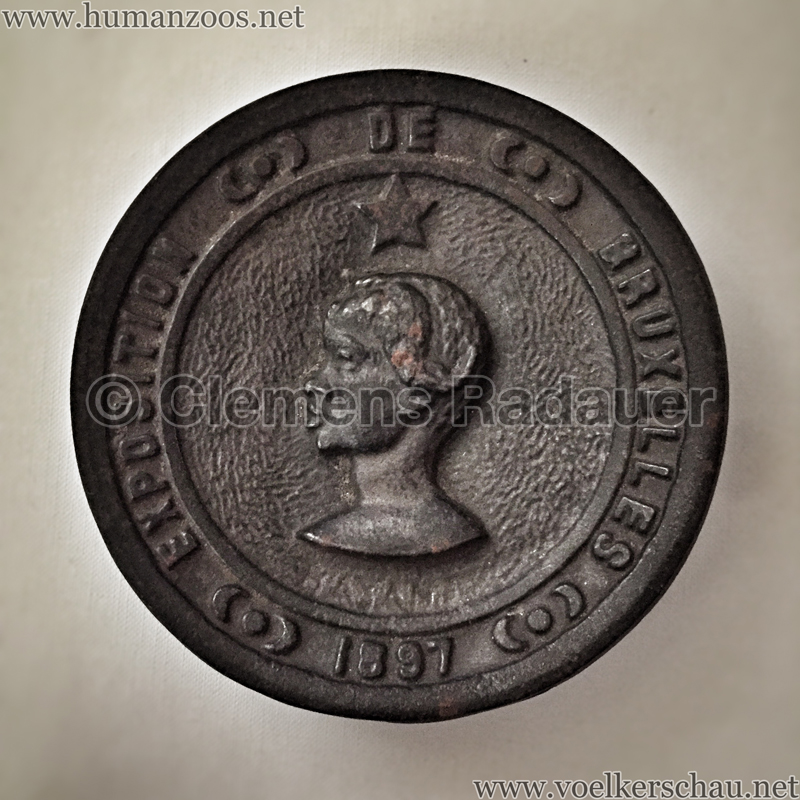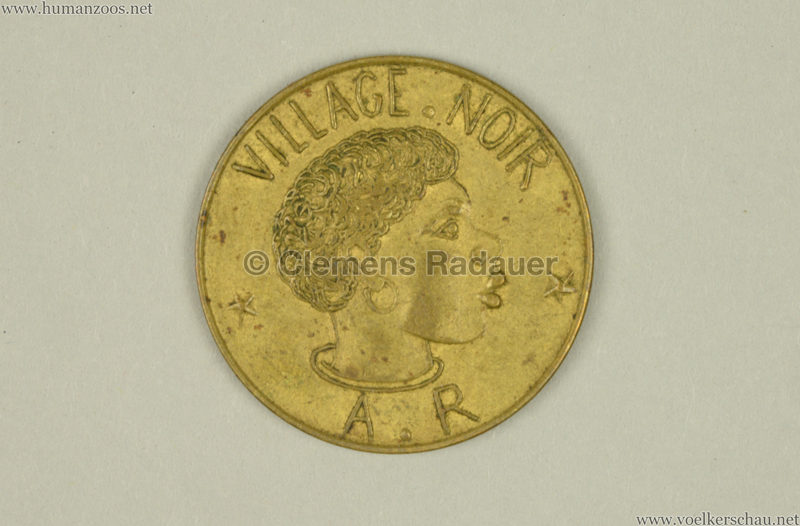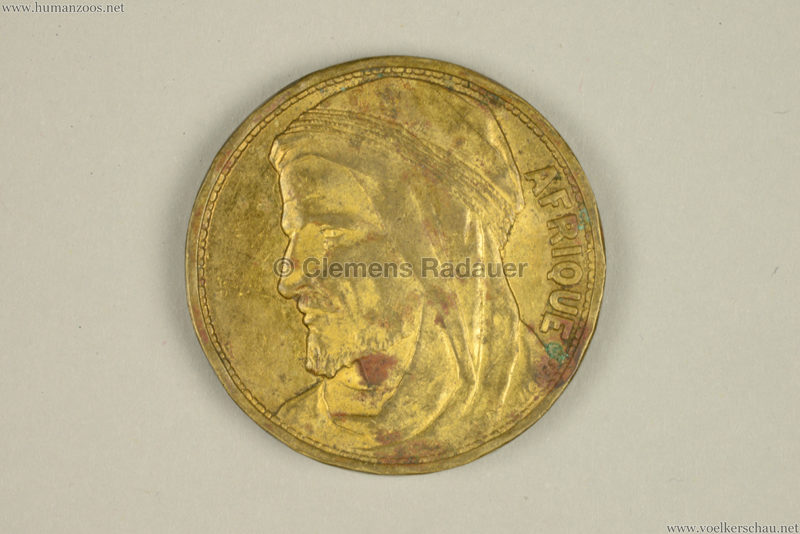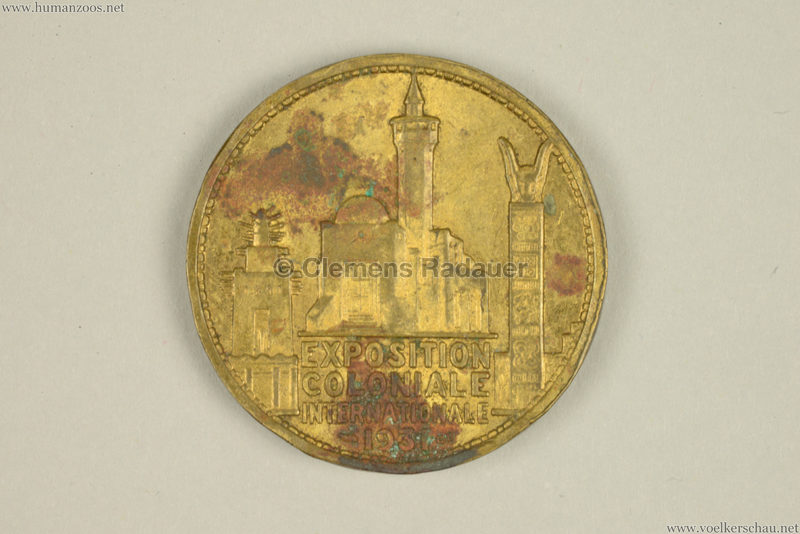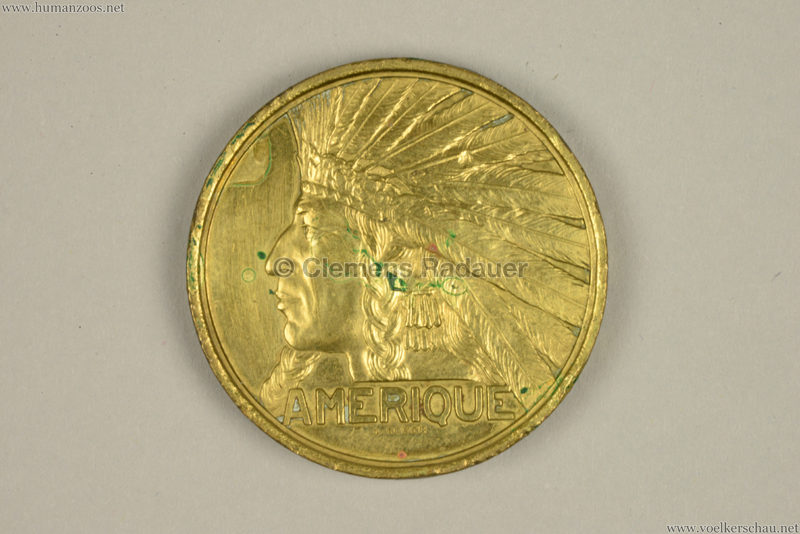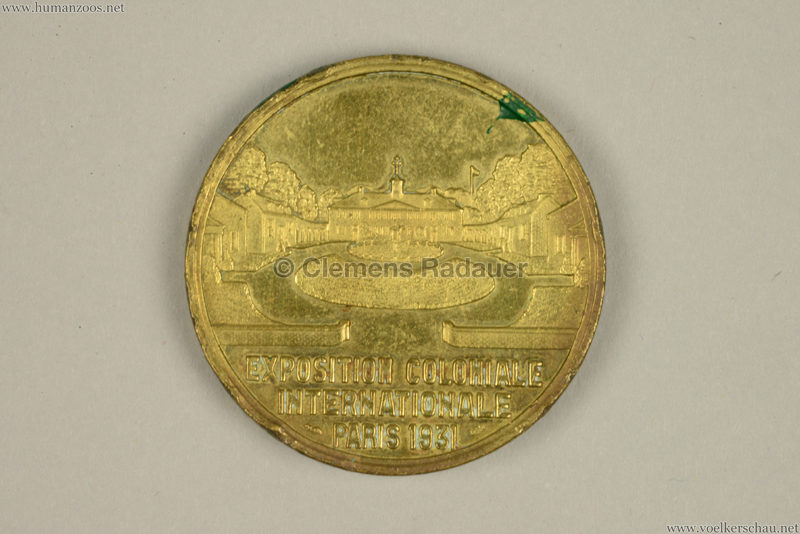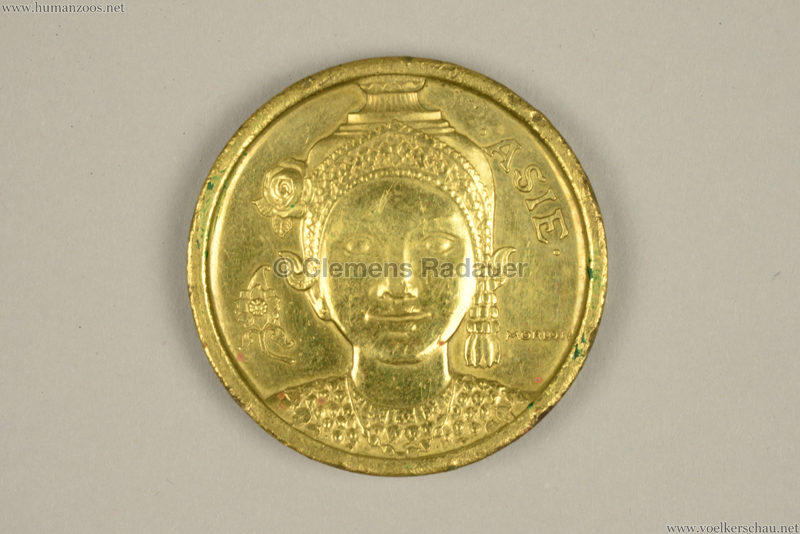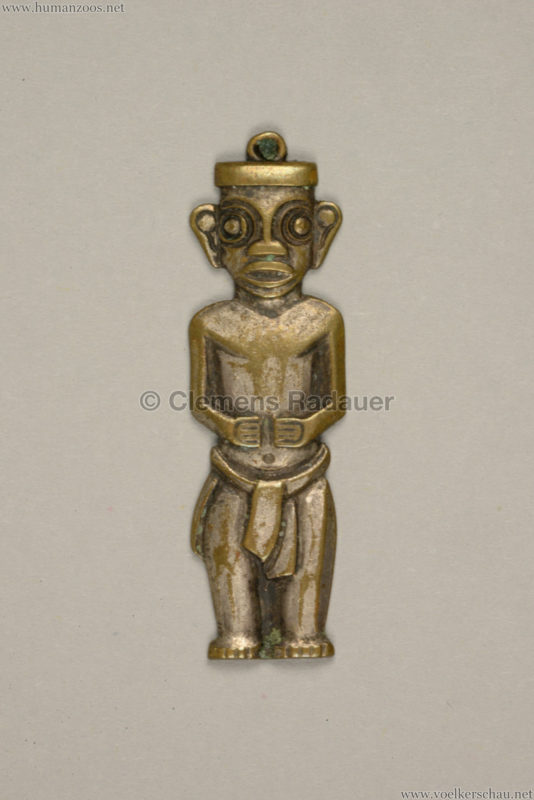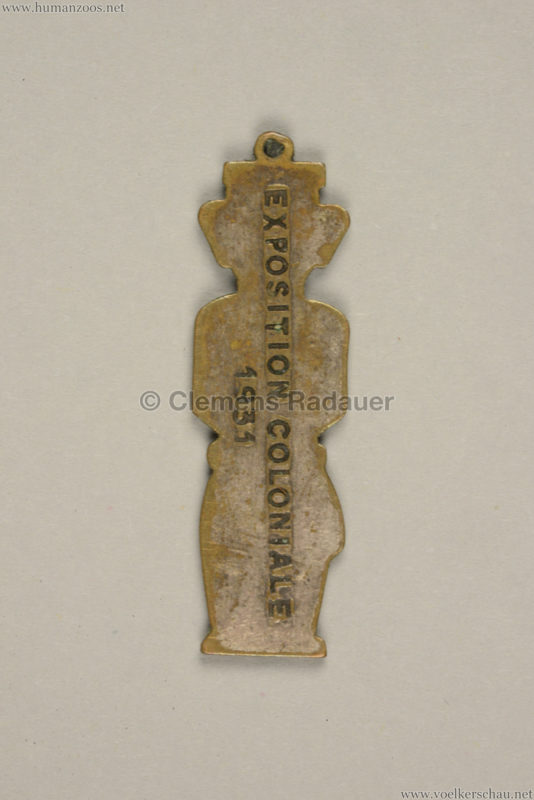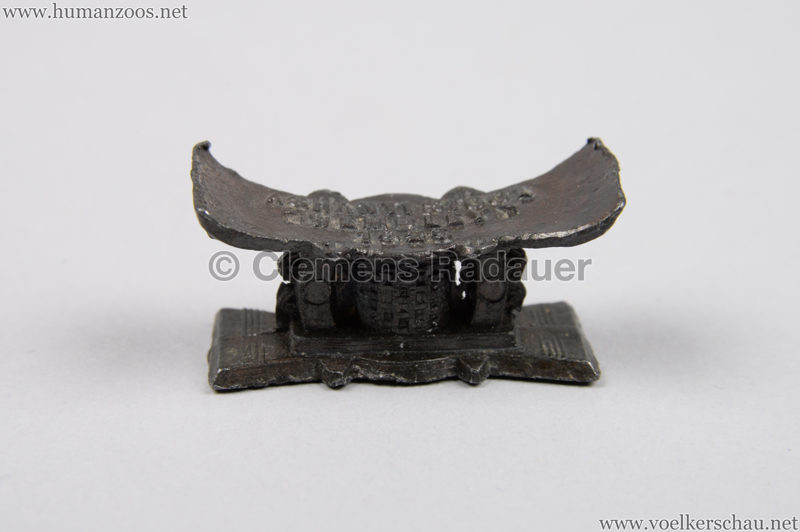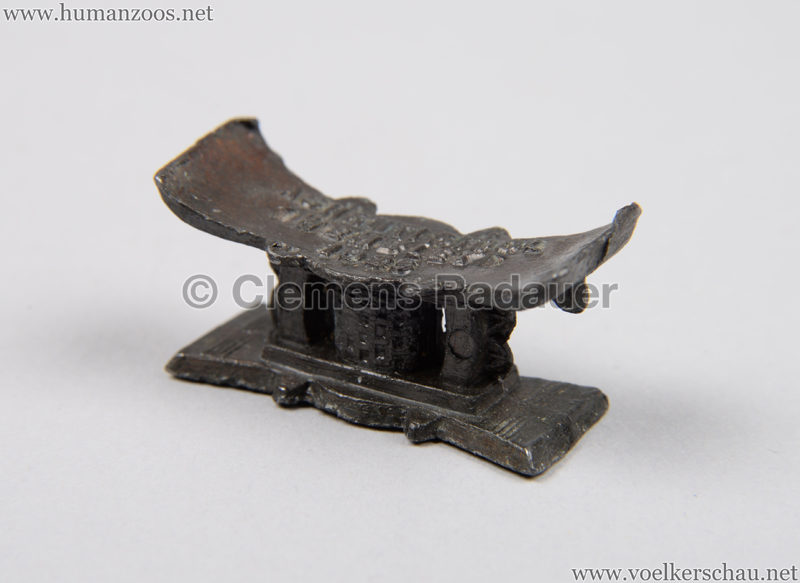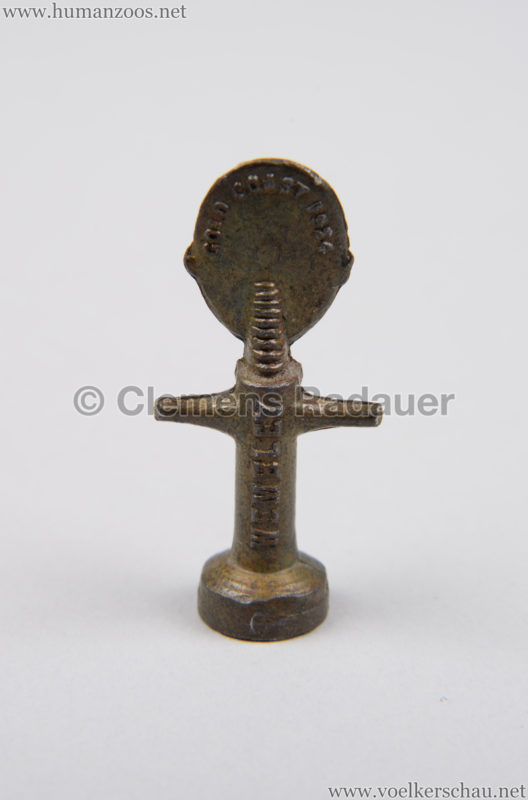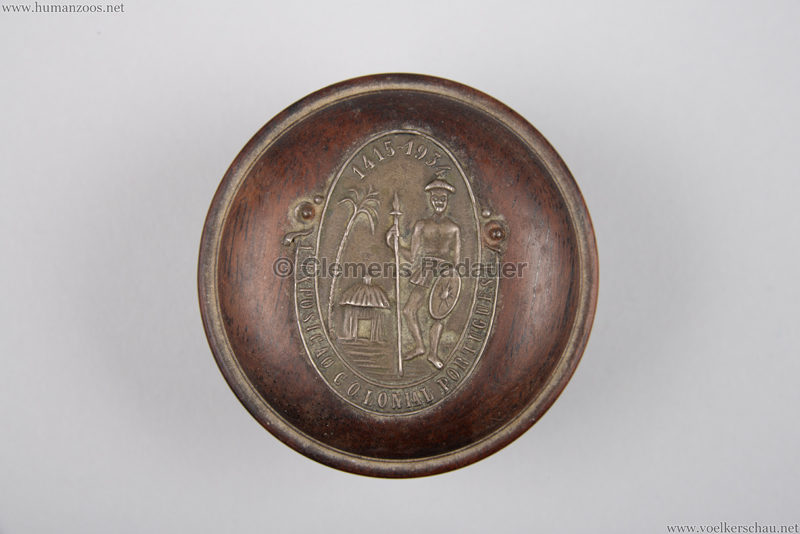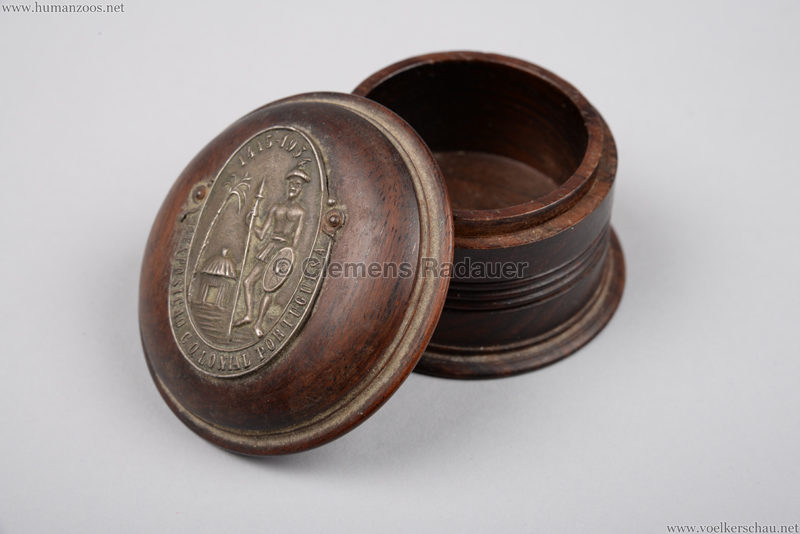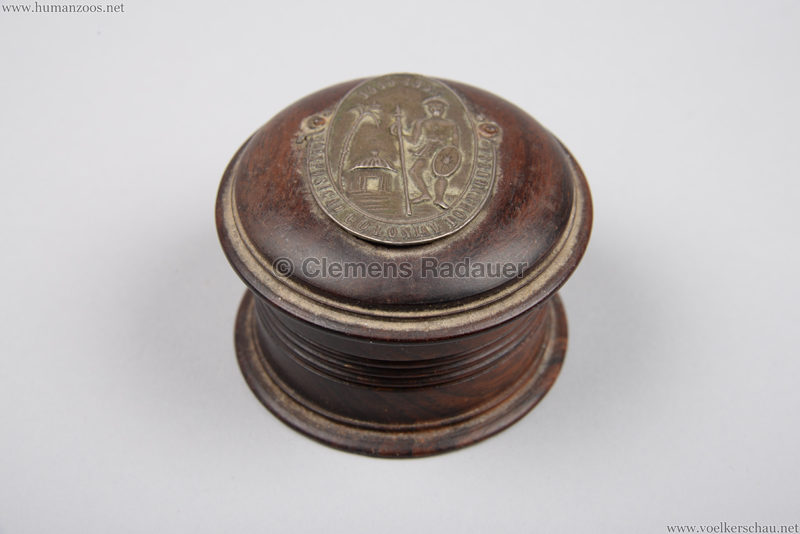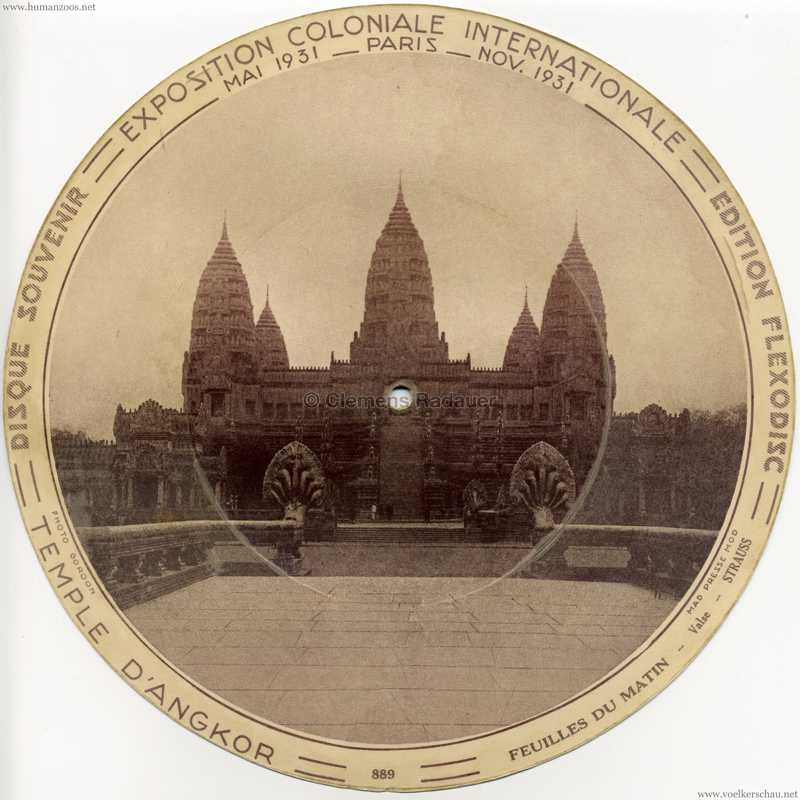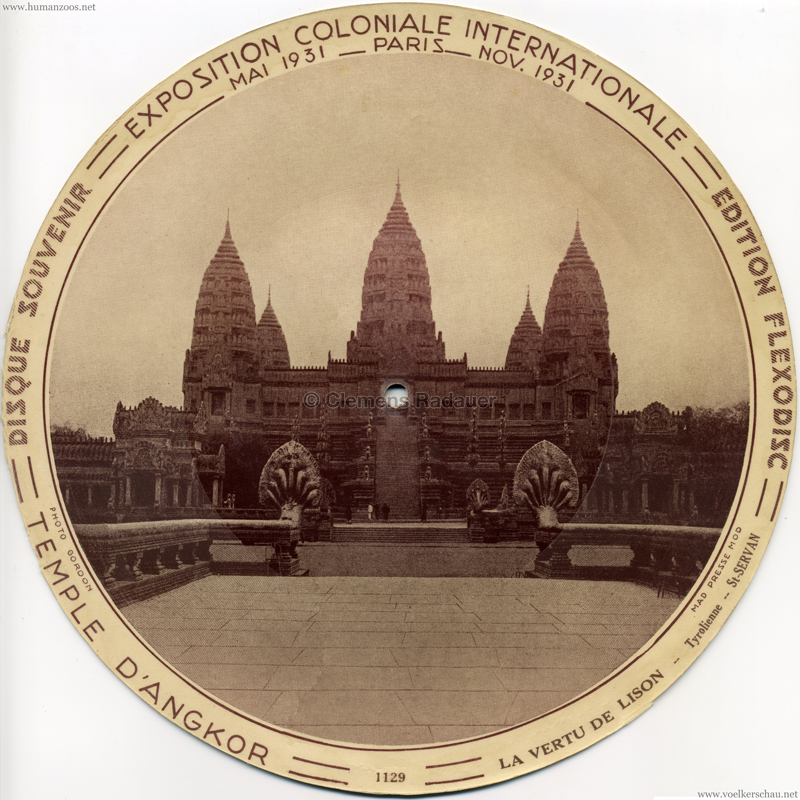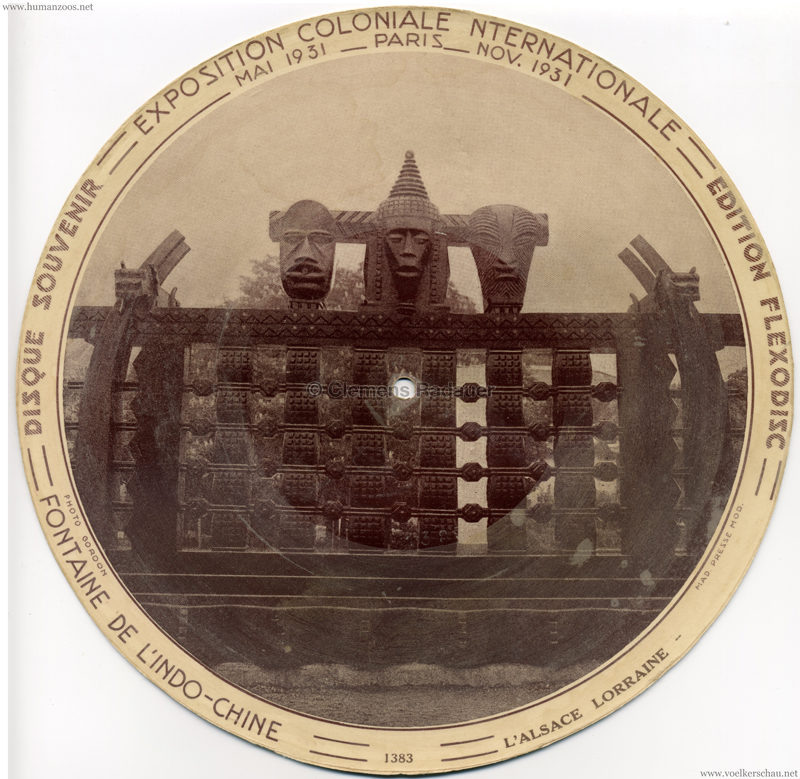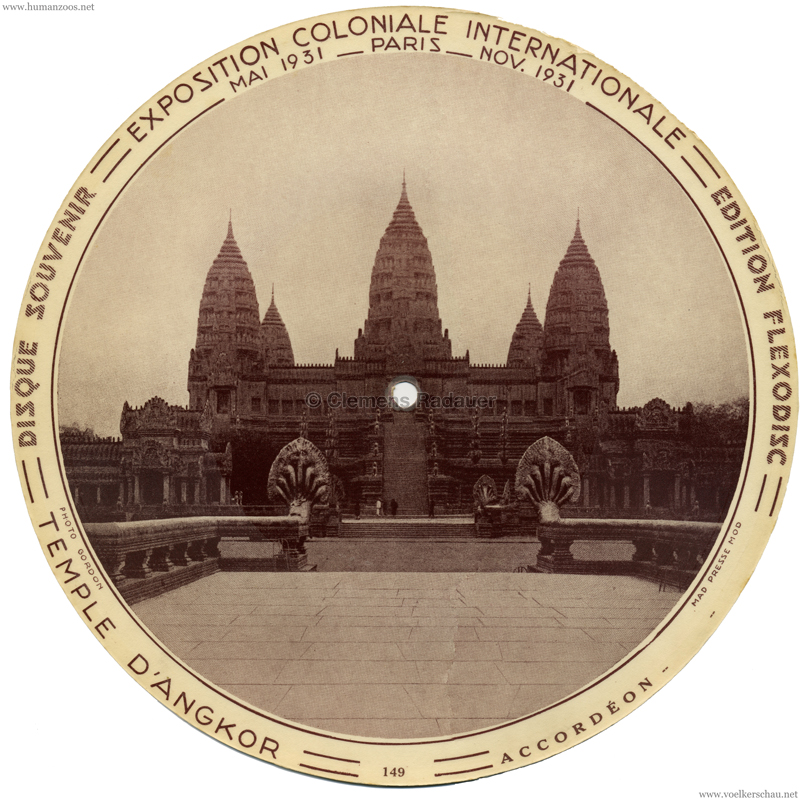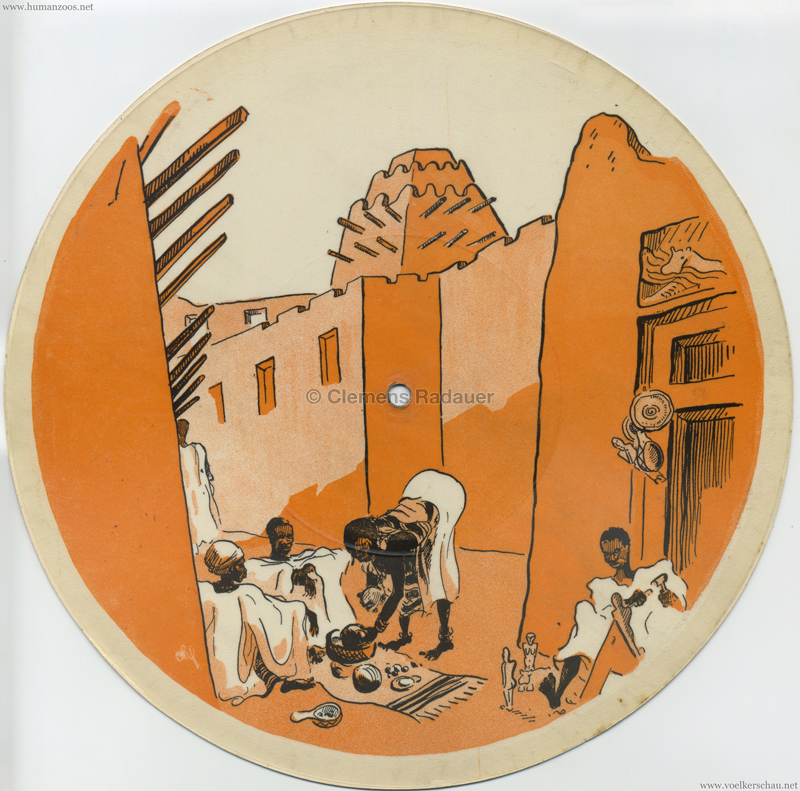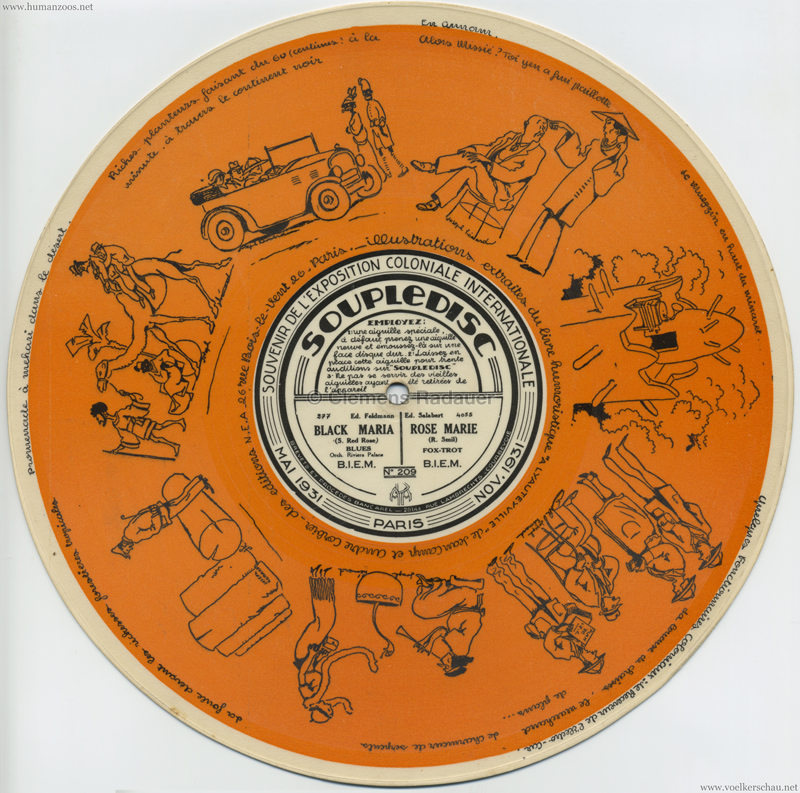These are objects connected to human zoos other than photographs, postcards, newspaper articles:
- A plate from the Exposition Universelle Paris in 1878 showing Indian workers (Ouvriers Indiens) who were exhibited in the Galerie du travail (“Hall of work”)
- A plate from the Exposition Universelle Paris in 1899 showing Javanese dancers who performed at the Kampong Javanais (Javanese village)
- A plate from the Exposition Universelle Paris in 1899 showing an Annamite theater
- A plate from the Exposition Universelle Paris in 1899 showing the “Rue du Caire”
- A plate from the Exposition Universelle Paris in 1899 showing “Buffalo Bill’s Wild West”
- A plate from the Exposition Universelle Paris in 1899 showing a “Tunisian concert”
- A series of 11 plates from the Exposition Universelle Paris in 1889:
- A plate from the Exposition Universelle, Internationale et Coloniale de Lyon in 1894 showing a “Senegalese Village”
- This rather large kauri shell (10,5 x 5 x 7 cm) was sold to visitors of Hagenbecks Indian human zoo at the International Art & Horticultural Exhibition Düsseldorf in 1904 and engraved by one of the exhibited people. The translation of the inscription is “Souvenir of Hagenbeck’s Indian Exhibition, Düsseldorf Amusement Park 1904”
- This rather large kauri shell (8,3 x 4 x 5,5 cm) was sold in Vienna, Austria, during a Indian human zoo (maybe in 1885 or 1903) and engraved by one of the exhibited people. The translation of the inscription is “Souvenir of the Singhalese, Vienna”
- This tin box (17,5 x 9,5 x 12,5 cm) features an image used for Gustav Hagenbeck’s Schau Indien in 1905/1906 – age unknown
- A “season ticket” to the Groote indische Tentoonstelling of 1906 in Amsterdam – an Indian human zoo organized by Gustav Hagenbeck – guaranteeing the holder two seats in the bleachers
- An undated circus themed game of quartets with the logo “OGO” on the back, probably produced in Germany in the 1930s.
There are always 4 cards to a set: set 1. “circus-workers”, set 2. “clowns”, set 3. “circus performers”, set 4. “dressage”, set 5. “Chinese-troupe”, set 6. “aerial acts”, set 7. “human zoos”, set 8. “carnivor dressage” (roughly translated from Geman)
Chinese-Troupe (China-Truppe):
Human Zoo (Völker-Schau):
- A circus themed game of quartets by the brand “EIDORA”, produced in Germany, probably in the 1950s.
There are always 4 cards to a set: “horses in the circus ring”, “aerial acts”, “animal show”, “people of the circus”, “human zoos”, “dances of the peoples”, “artist in the circus ring”, “funny folk” (roughly translated from Geman)
- Diorama:
from the book “Singhalesen und Sudanesen. Szenische Bilder aus fernen Ländern für die Jugend” printed in 1888 in Vienna, Austria. The book consists of 8 foldable color-lithographs depicting the traditional life of Sinhalese and Sudanese peoples. This diorama shows a group of Sinhalese in front of the Rotunde – a building erected for the Vienna World Fair 1873 – a space which was frequently used as exhibition ground for human zoos:
- Sheet music from 1886, for a song called “La belle Cynghalaise du Jardin d’Acclimatation” with music by L. Mayeur and lyrics by Mrs. A. Porte & H. Vernet:
- Sheet music (undated), for a song called “Le village de l’Exposition” with music by Robert Barmettler and lyrics by Georgette Pezet:
- Sheet music from 1934, for a song called “au Louvre ya bon joujoux” with music by Pierre Letoray and recorded by Helene Carl at the Exposition de Jouets – it features an image of Chef Nyambi:
- Sheet music for a song called “My Gee Gee From The Fiji Islands” with music by Albert Von Tilzer, lyrics by Lew Brown and publishd by Broadway Music Corporation, 145 West 45th Street, New York, NY in 1920.
My Gee Gee From The Fiji Islands
- Letter of thanks from the director of the cabinet of Louis IV Grand Duke of Hesse to an unknown person, dated from the 15th of October 1890. The author thanks for an album of pictures of the “Beduinentruppe” (Bedouin group) which was shown in Munich at the Oktoberfest at the time:
- Letter by Carl Hagenbeck sent to Joseph Menges who was one of his most important associates in East-Africa and helped him importing animals and organizing human zoos:
- Postcard by J. F. G. Umlauff, a dealer of ethnographica and animals who was closely linked to Carl Hagenbeck personally and in business, to Joseph Menges, one of Hagenbeck’s main associates in East-Africa:
- Business card from Eduard Gehring who organised several groups under his own name that toured through Germany just before the turn of the century and he worked with Carl Hagenbeck Jr. before and after that:
- Business card from Norwegian ethnologist and traveler Adrian Jacobsen who worked closely with Carl Hagenbeck Jr. – notably with the 1880/1881 group of Inuit from Labrador and the 1881/1882 group from Patagonia that toured in Germany & France:
- Business card from German traveler and animal trader Josef Menges who did a lot of business with Carl Hagenbeck Jr. and organised several human zoos (e.g. 1889 J. Menges’ Ostafrikanische Karawane & 1895 Somalis at the Crystal Palace):
- Flyer or letterhead from the company of Carl Hagenbeck (Charles Hagenbeck) in Hamburg depicting a caravan of captured African animals being handled by a group of Westafrican men and a European man on a camel:
- Envelope addressed to a participant of the Abyssinian Village at the Jubiläumsausstellung in Mannheim 1907:
- Ticket stub from circus Kapella which also featured a human zoo – August 1935 in Jesberg, Germany:
- Southeast Asian style souvenir hat sold during the 1931 World’s Fair in Paris (Exposition Coloniale International Paris) to visitors:
- A nude study of a man by P. Westendorf dated 1899 in Munich done in pencil. The portrayed man was possibly a member of a human zoo that was in Munich in 1899: the Aschanti -Village:
- art print of the Sudanese village at the 1931 World’s Fair in Paris (Exposition Coloniale International Paris):
- aquarell painting of the Café Maure at the 1931 World’s Fair in Paris (Exposition Coloniale International Paris):
- art print by Charles Pinet of the reconstruction of the tempel of Angkor Wat errected at the 1931 World’s Fair in Paris (Exposition Coloniale International Paris):
- these are portraits of members of the Cirque Amar (Circus Amar) painted by Paul Couvreur – one of them is dated to 1943:
- two original oil paintings/sketches by Swiss painter Josef Clemens Kaufmann (1867-1926) depicting some Indian artisans who were part of an group touring Germany & Switzerland in 1905 The group was organised by John & Gustav Hagenbeck and performed in several Swiss cities including Lucerne at the Hotel Europe, where Kaufmann painted them:
- an original sketch by Oliver Paque/William H. Pike of the Ashanti Village at the Crystal Palace which was published in the Daily Graphic on the 10 April 1903:
- two original sketches by Eugen Croissant whos caricatures were published in the German weekly magazines Fliegende Blätter and Simplicissimus. These date from around 1930:
- a sketch by an unknown artist (presumably from Southern Germany) depicting the exhibition of undressed men on a stage in front of an audience. It dates from around 1900:
- two paintings on wood which each incorporate three postcards made for the 1931 World’s Fair in Paris (Exposition Coloniale International Paris):
- these two ashtrays (diameter 12 cm) are probably cast iron and were made for the Exposition Internationale de Bruxelles in 1897:
- this coin was made for the African Village (Village Noir) at the Exposition de Nantes in 1904:
- these commemorative coins were issued during the World Fair in Paris 1931:
- this pendant was sold during the World Fair in Paris 1931:
- these two metal miniatures – one of an Ashanti stool and one of an Ashanti Akuaba (fertility statue) – were sold as souvenirs at the Wembley Exhibition in 1924:
- this little wooden box was made for the Exposicao Colonial Portuguesa Porto in 1934:
- ouvenir flexi-picture discs were sold at the Colonial Exhibition in Paris 1931:
